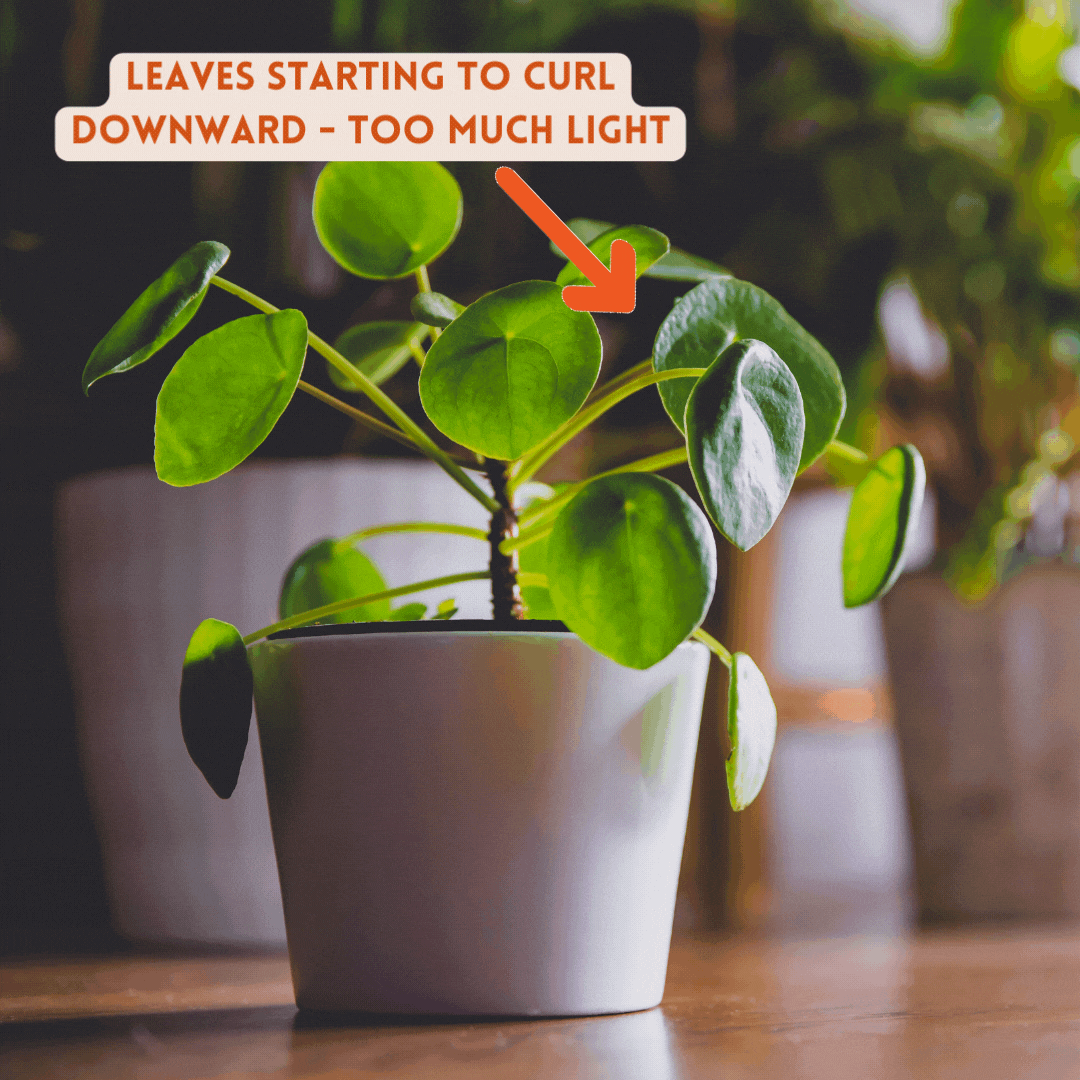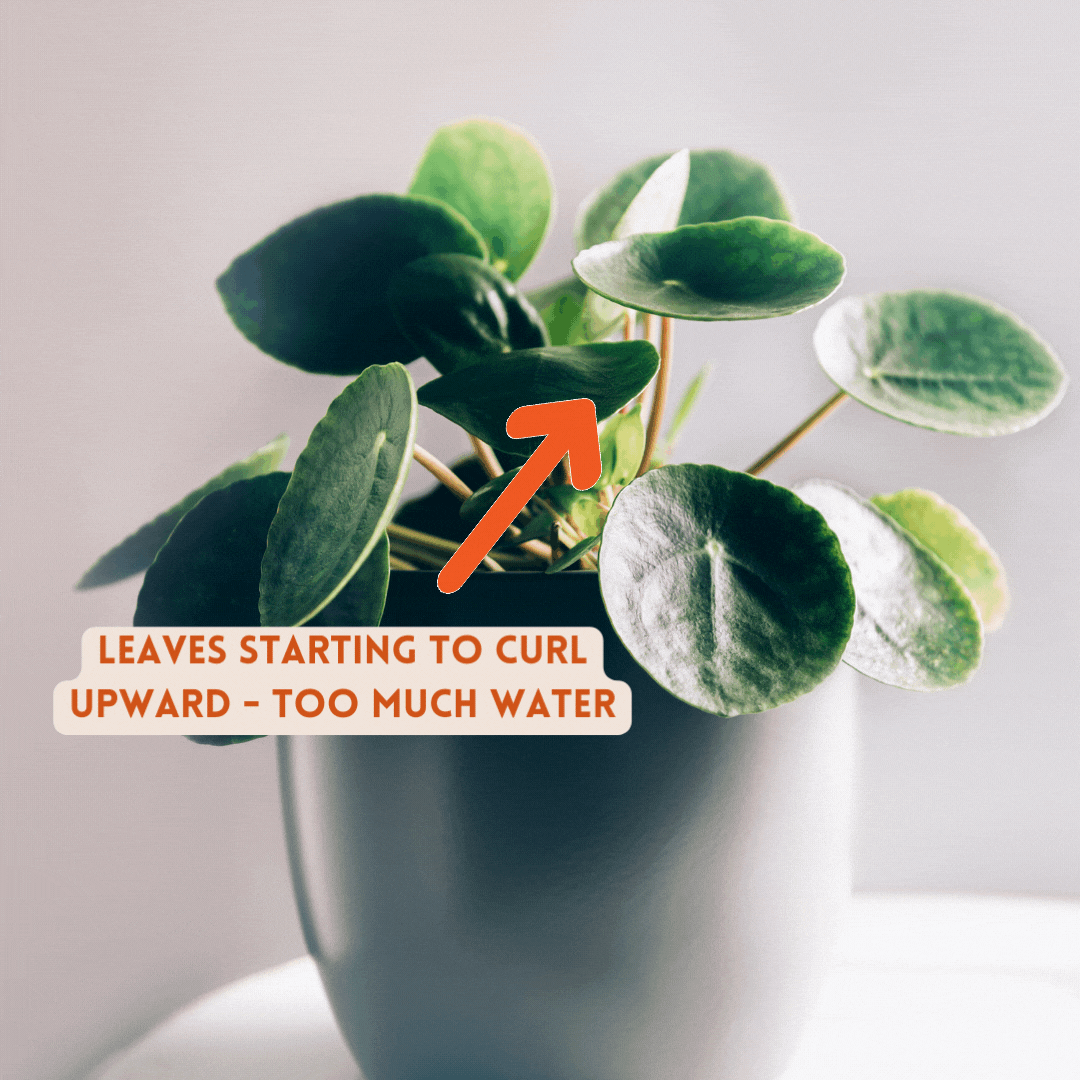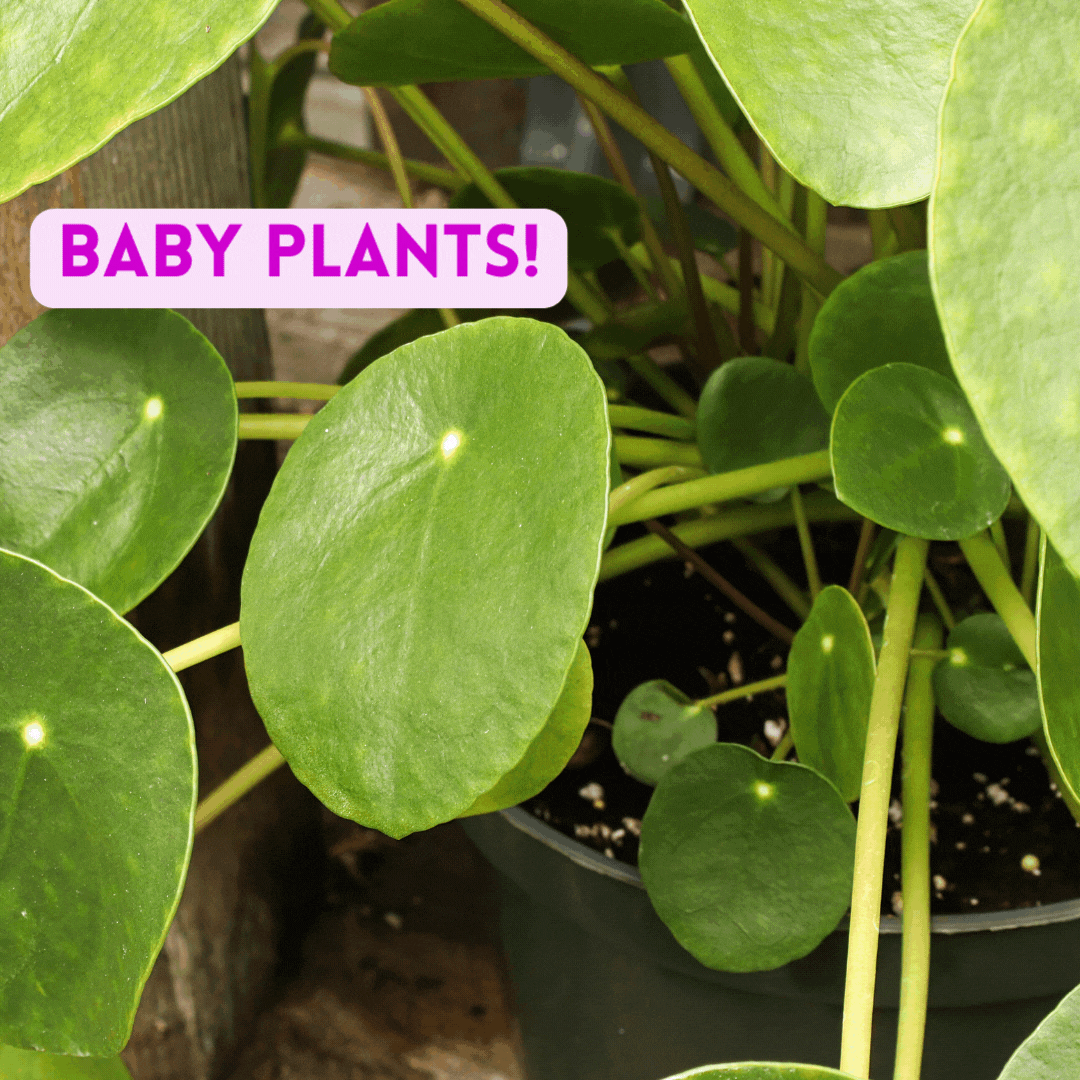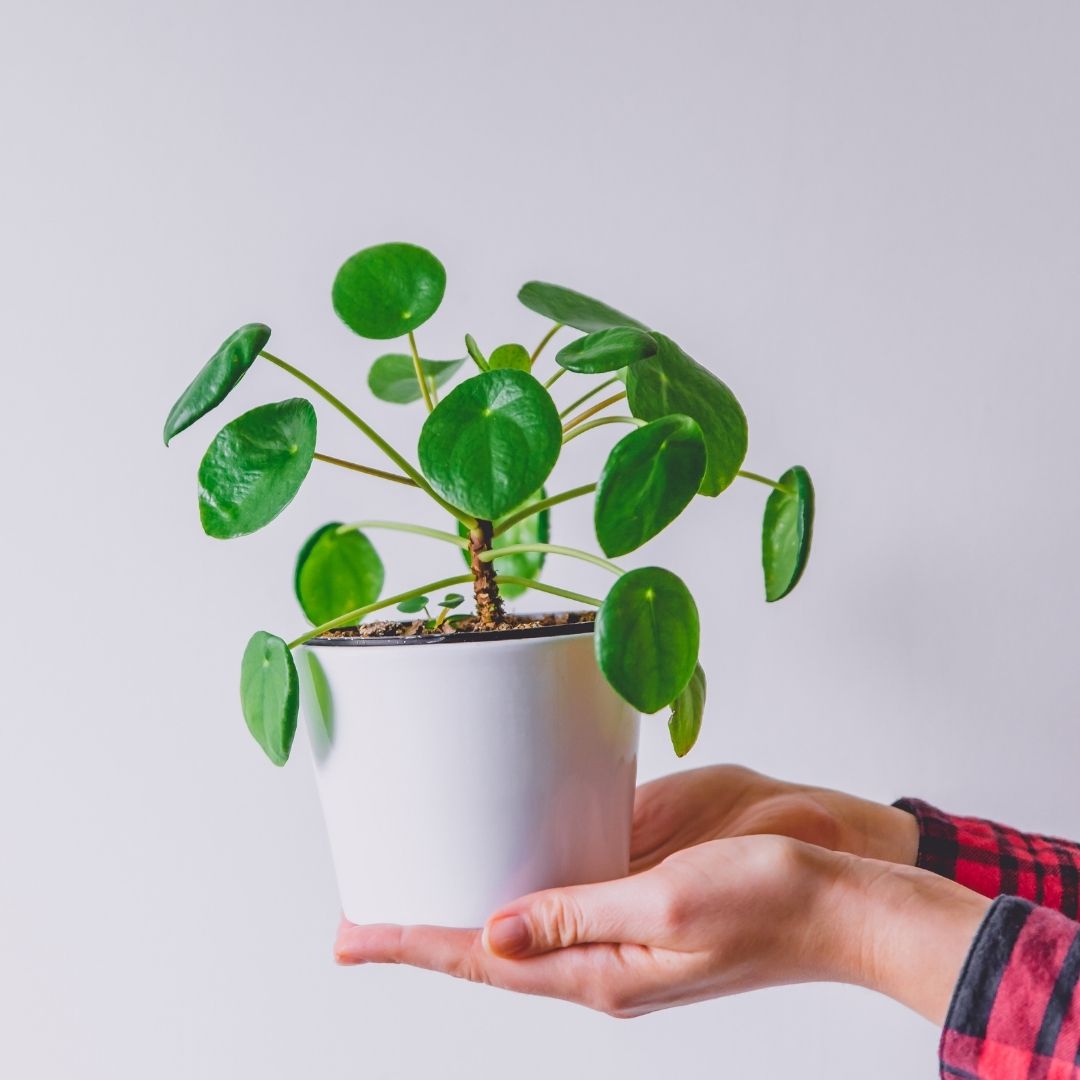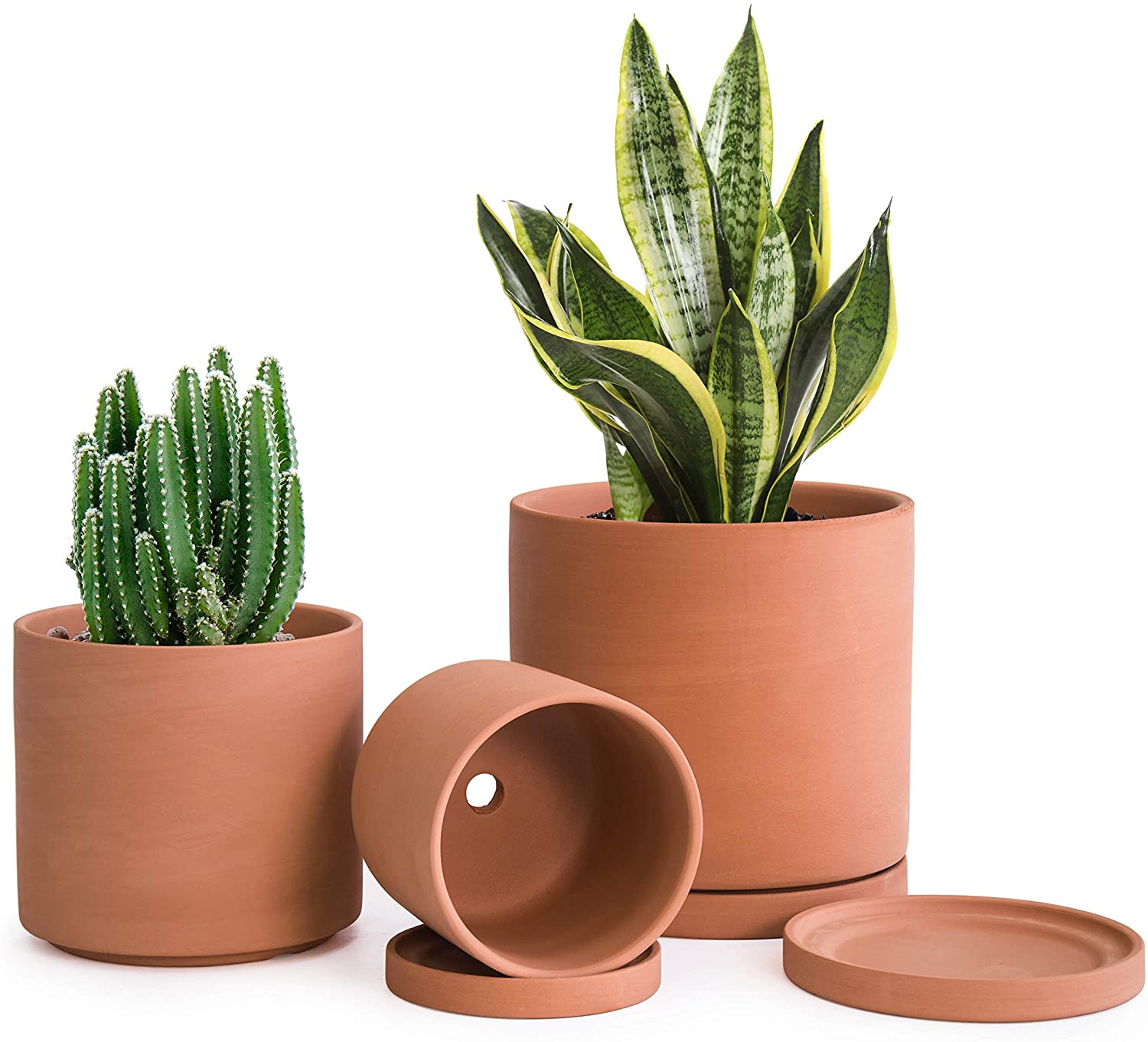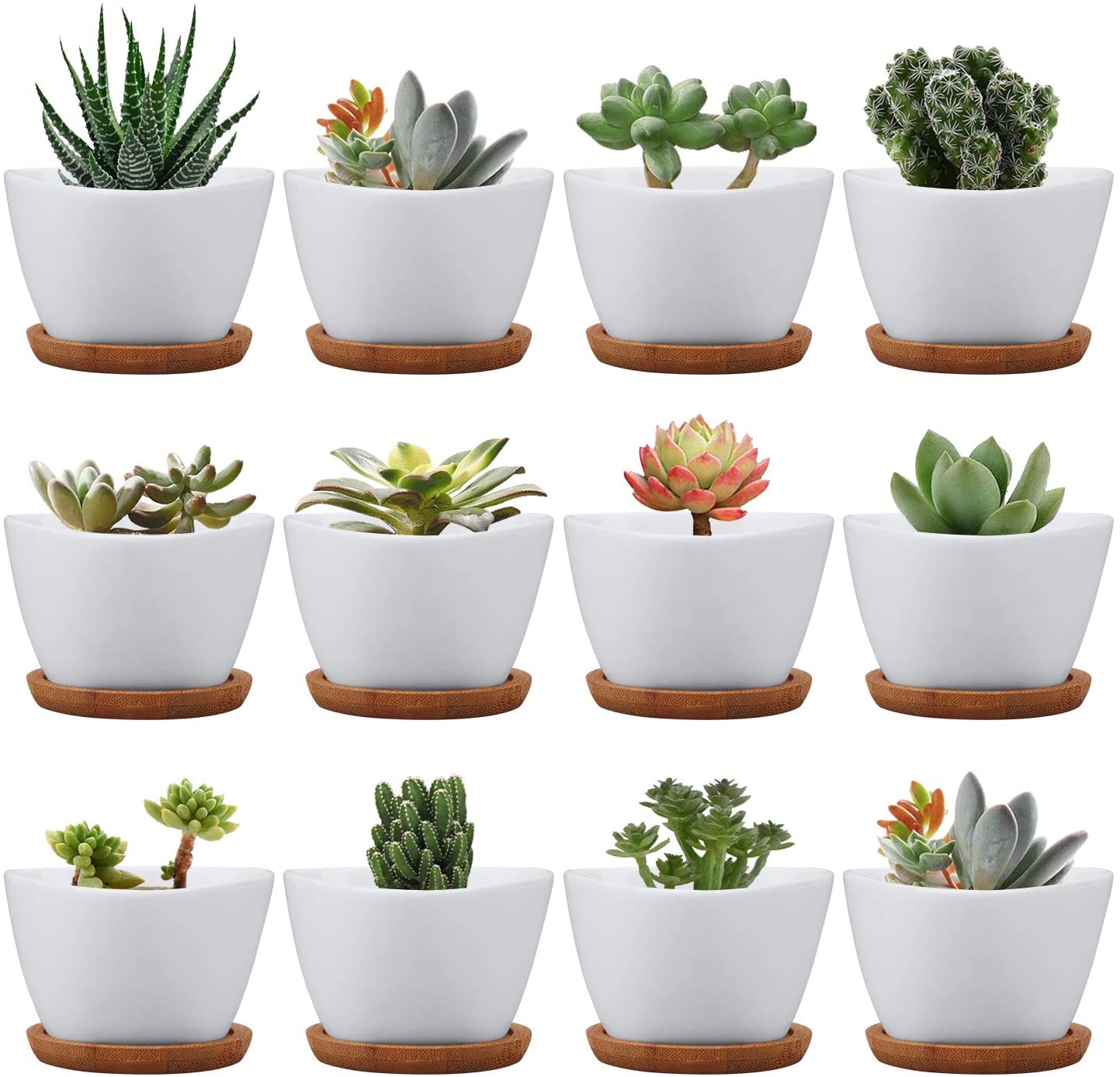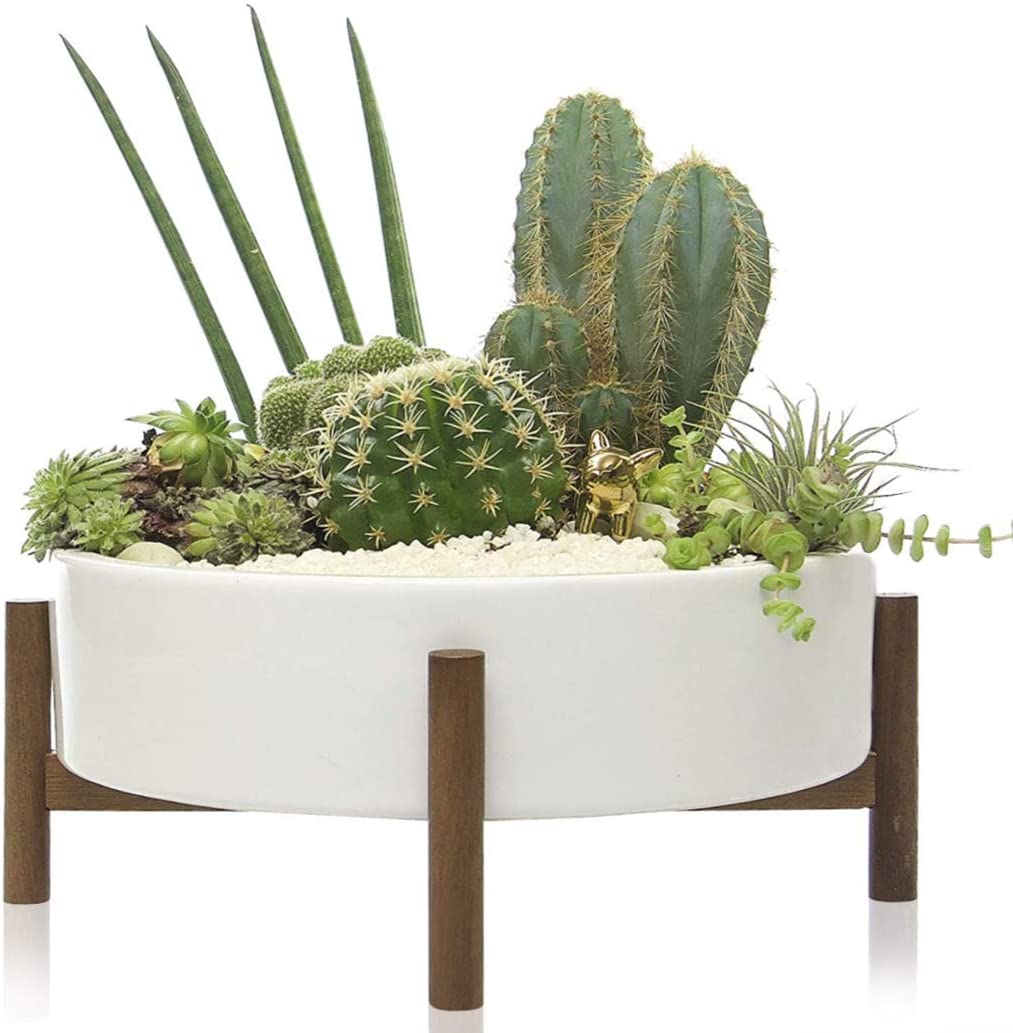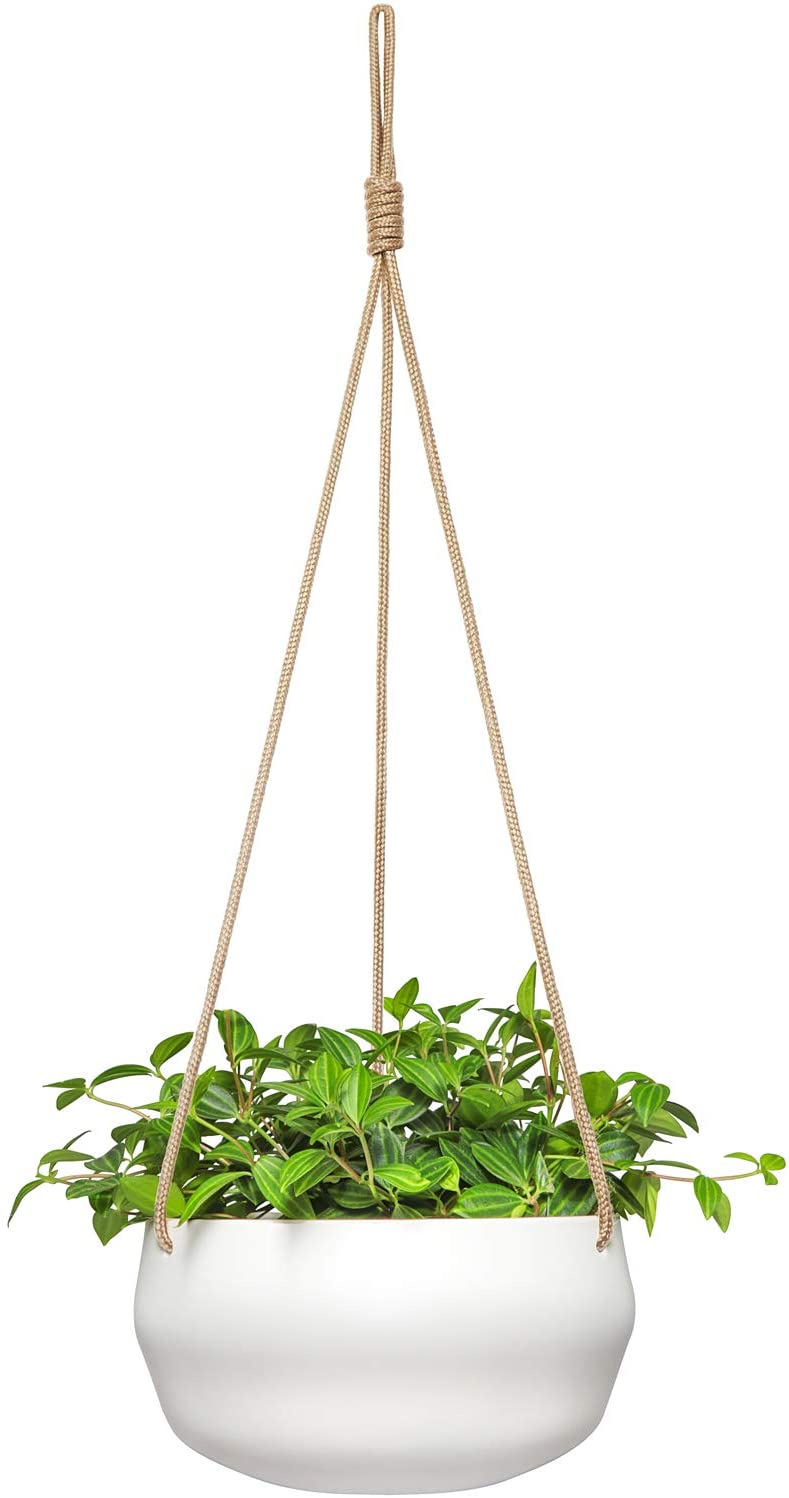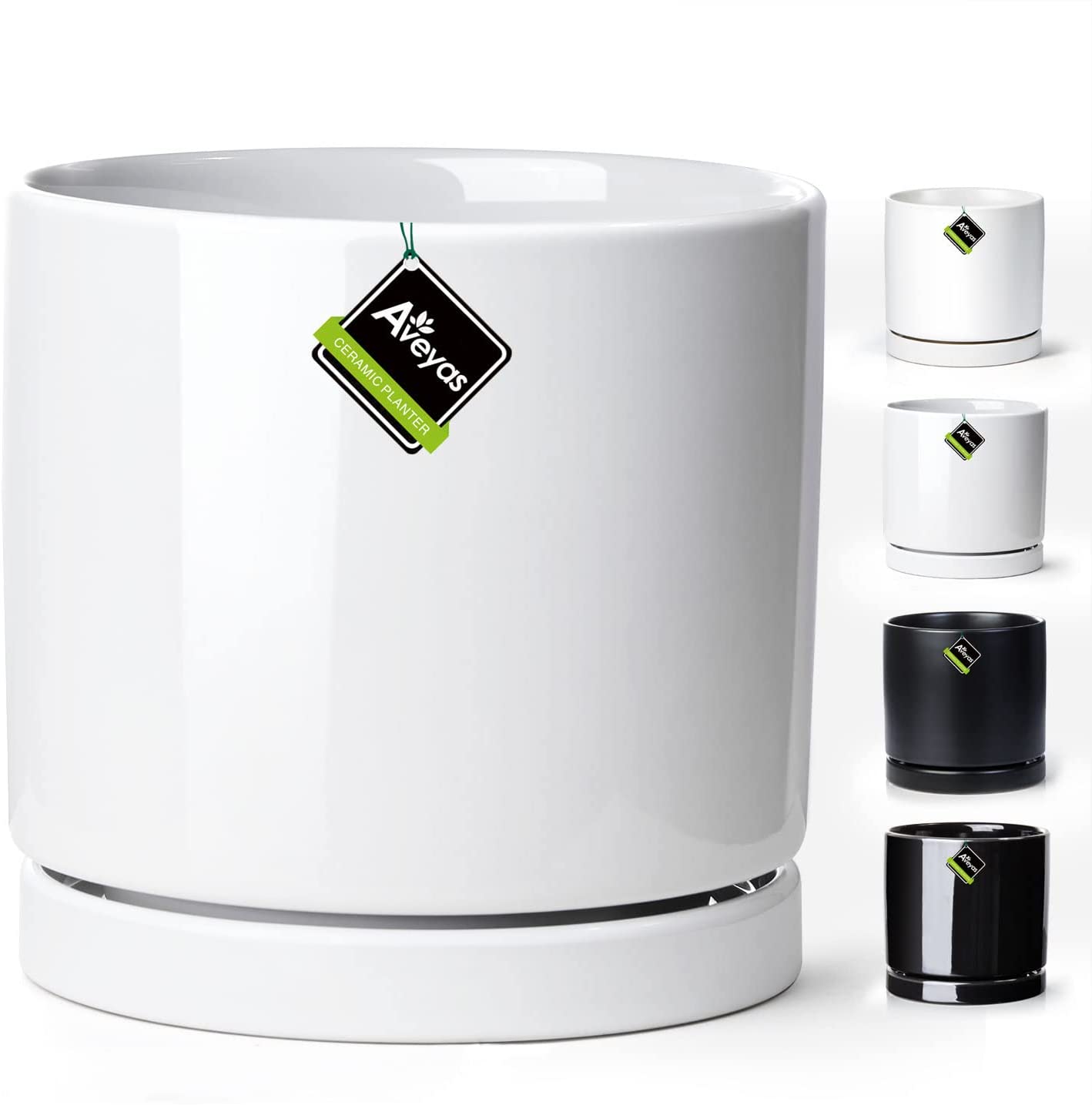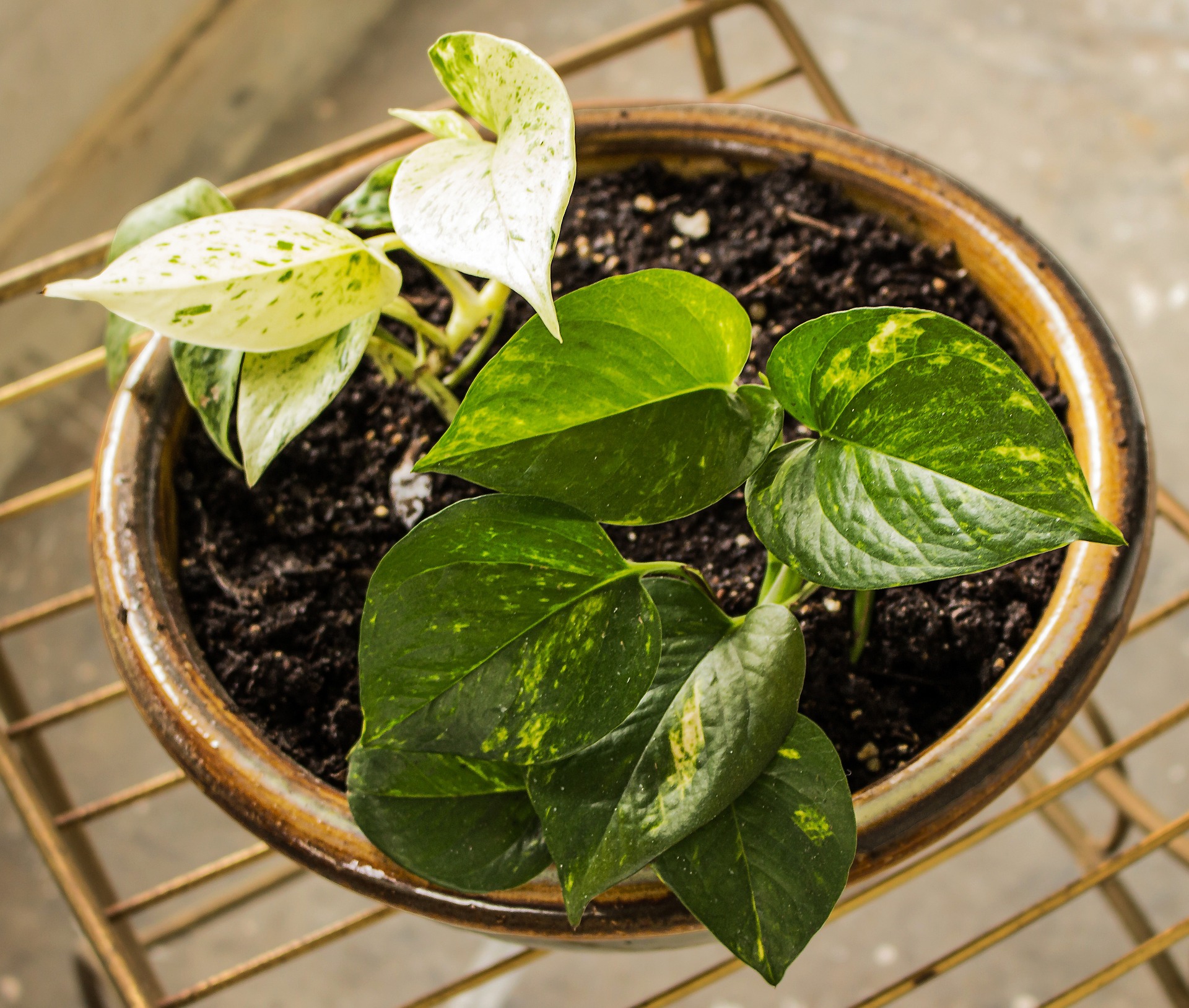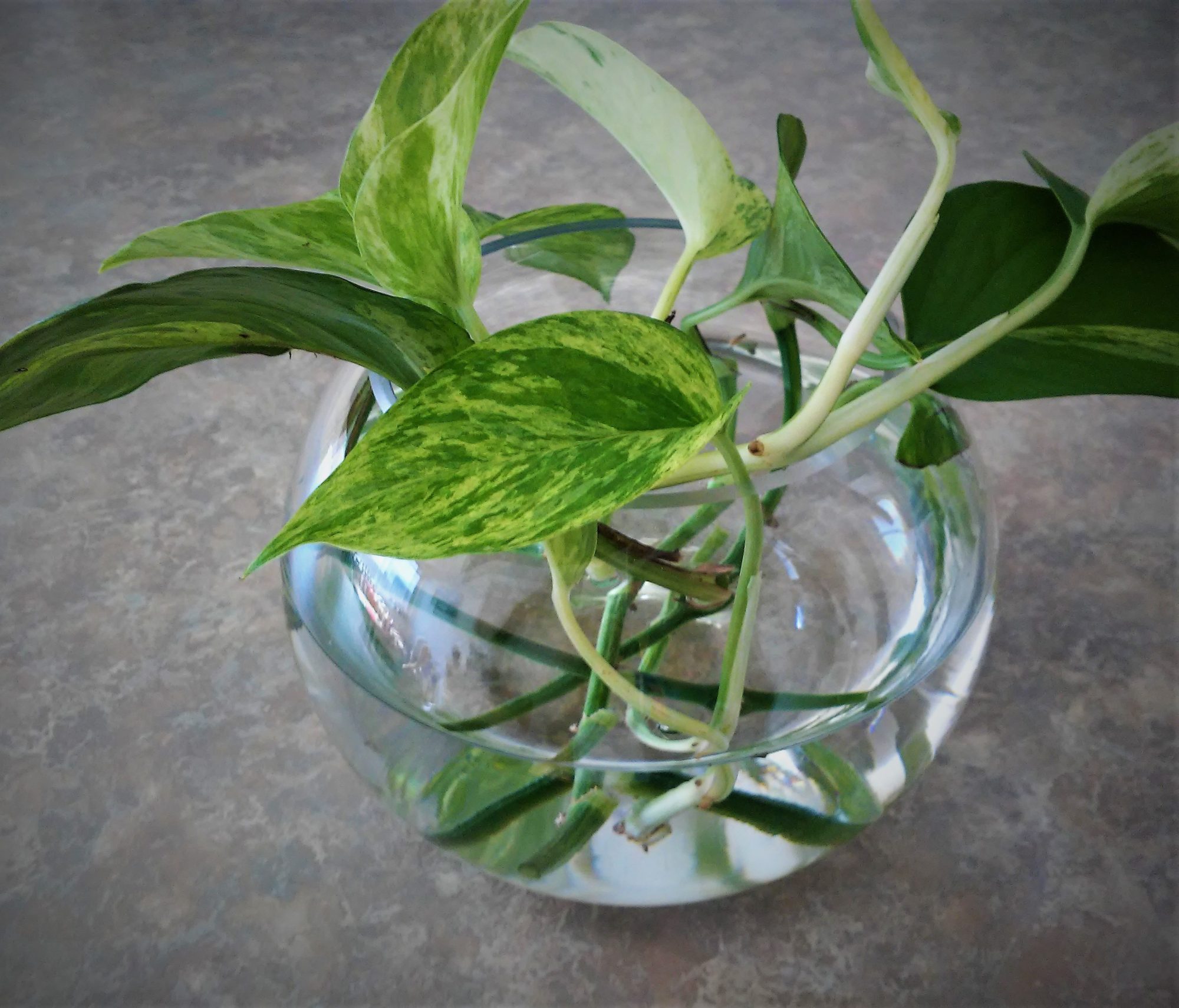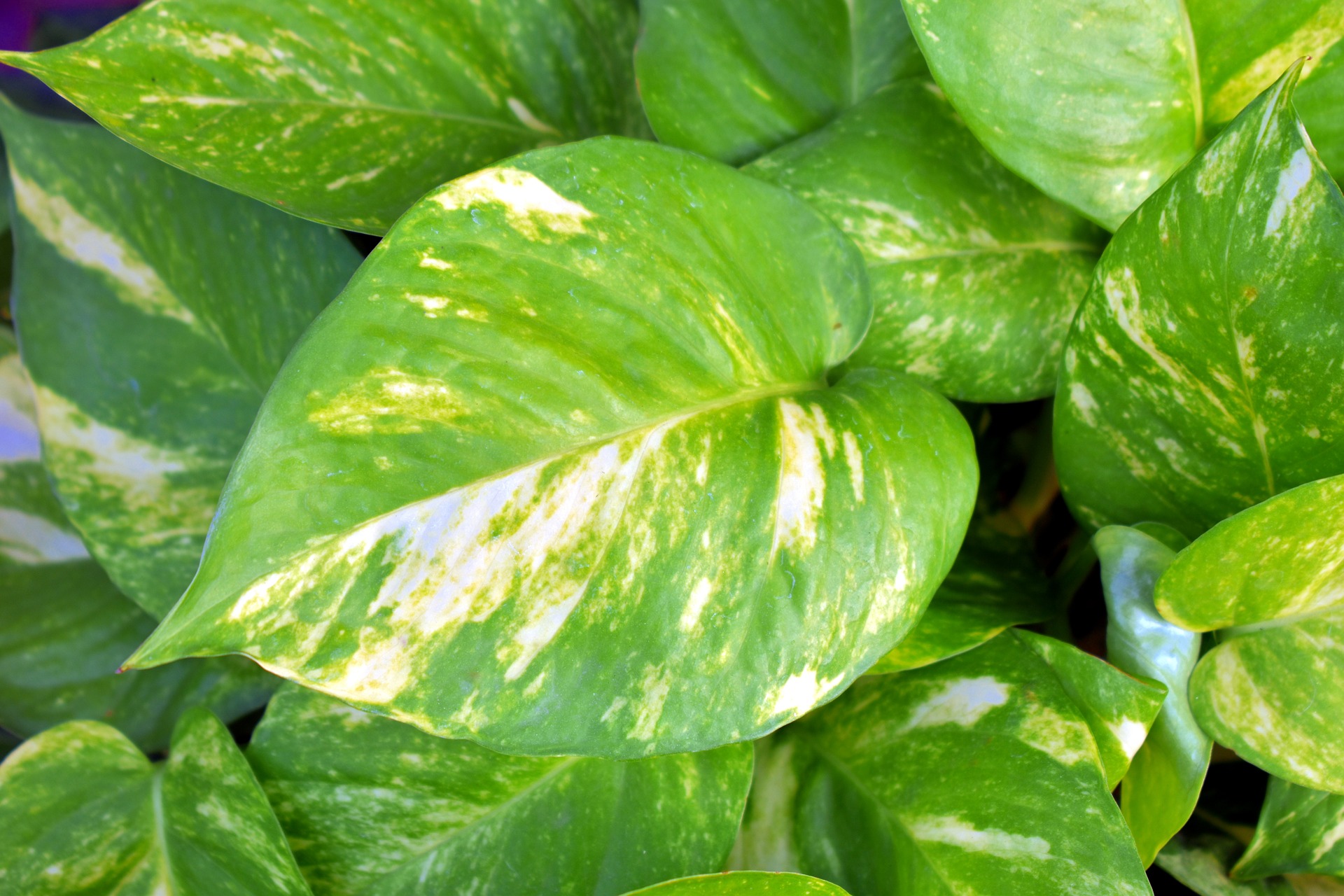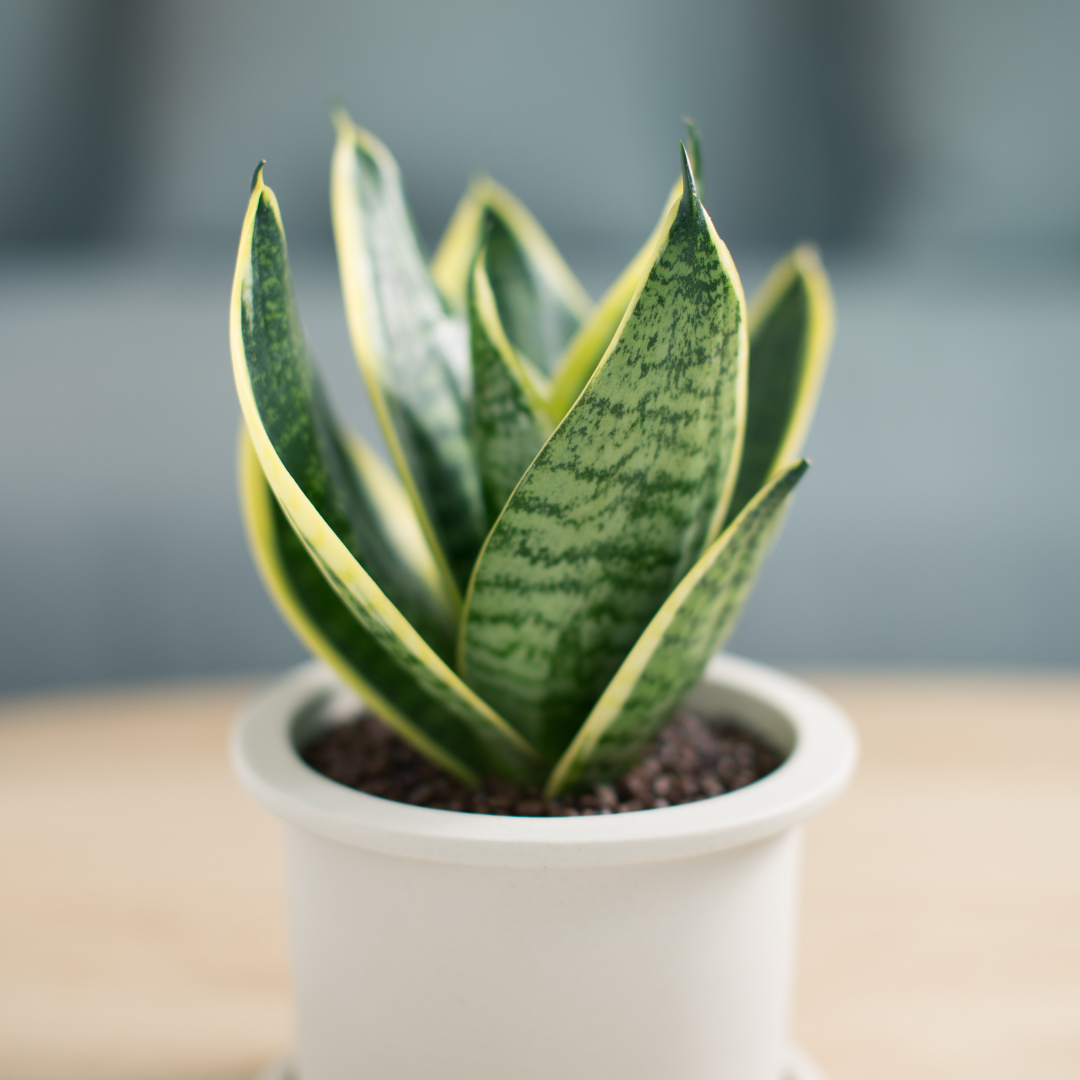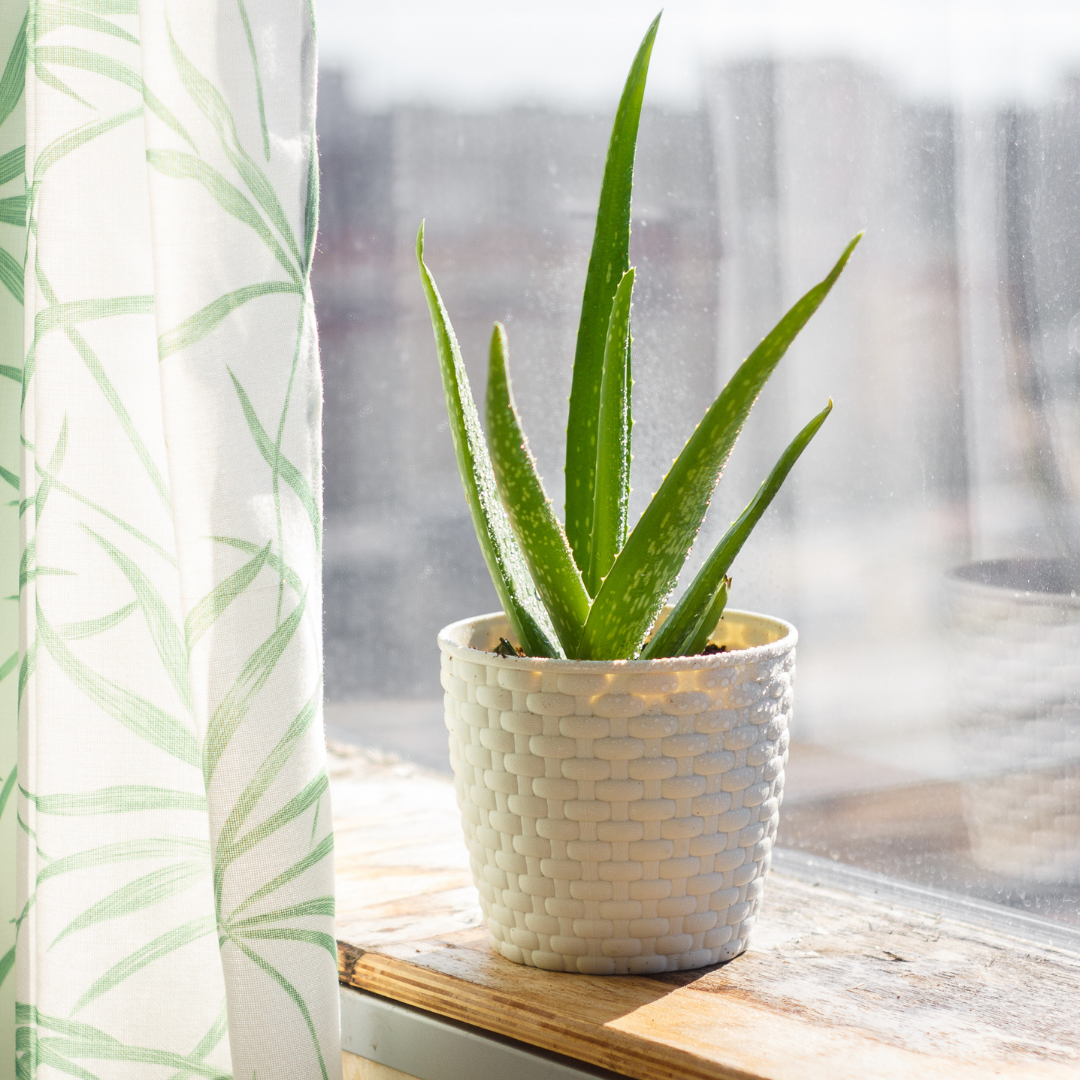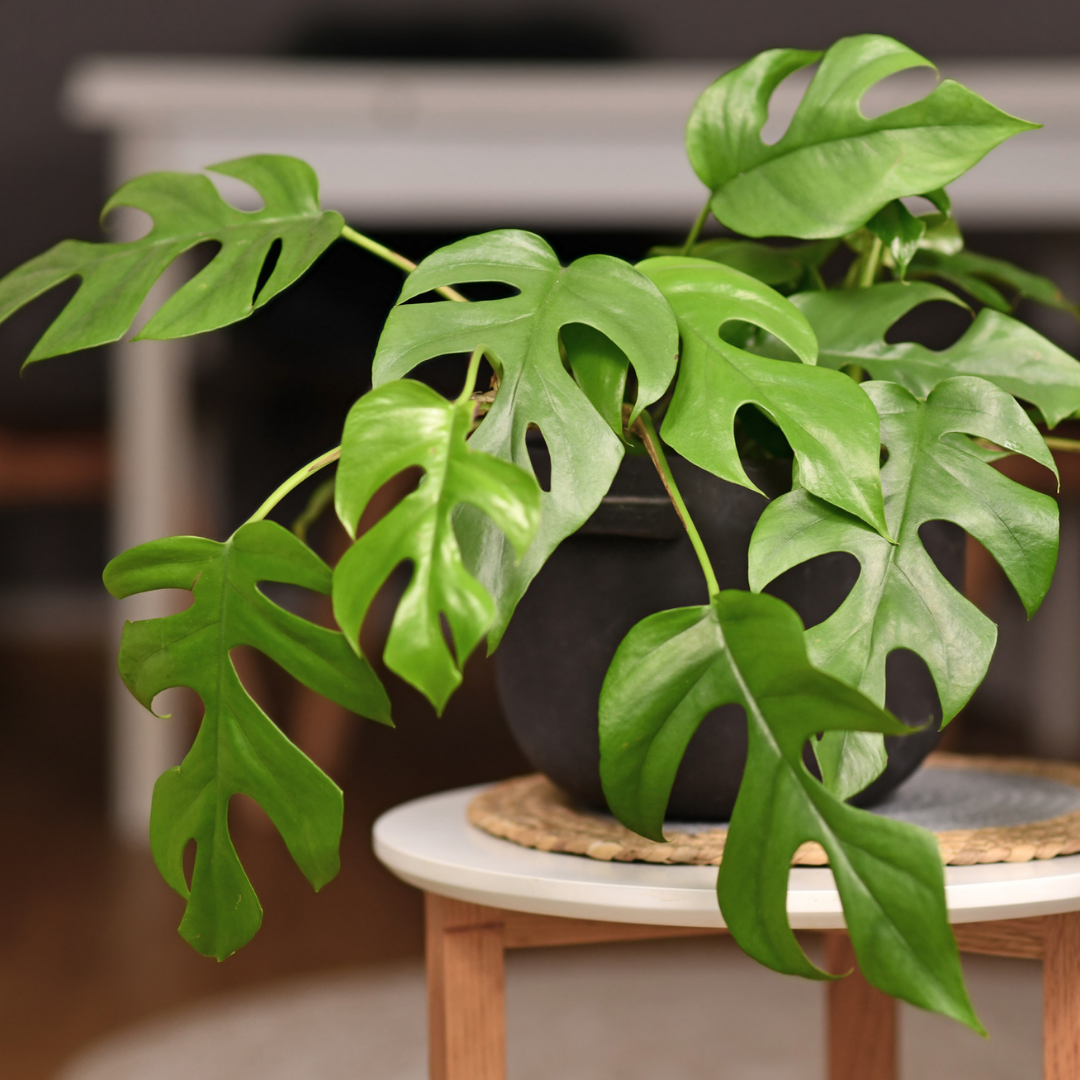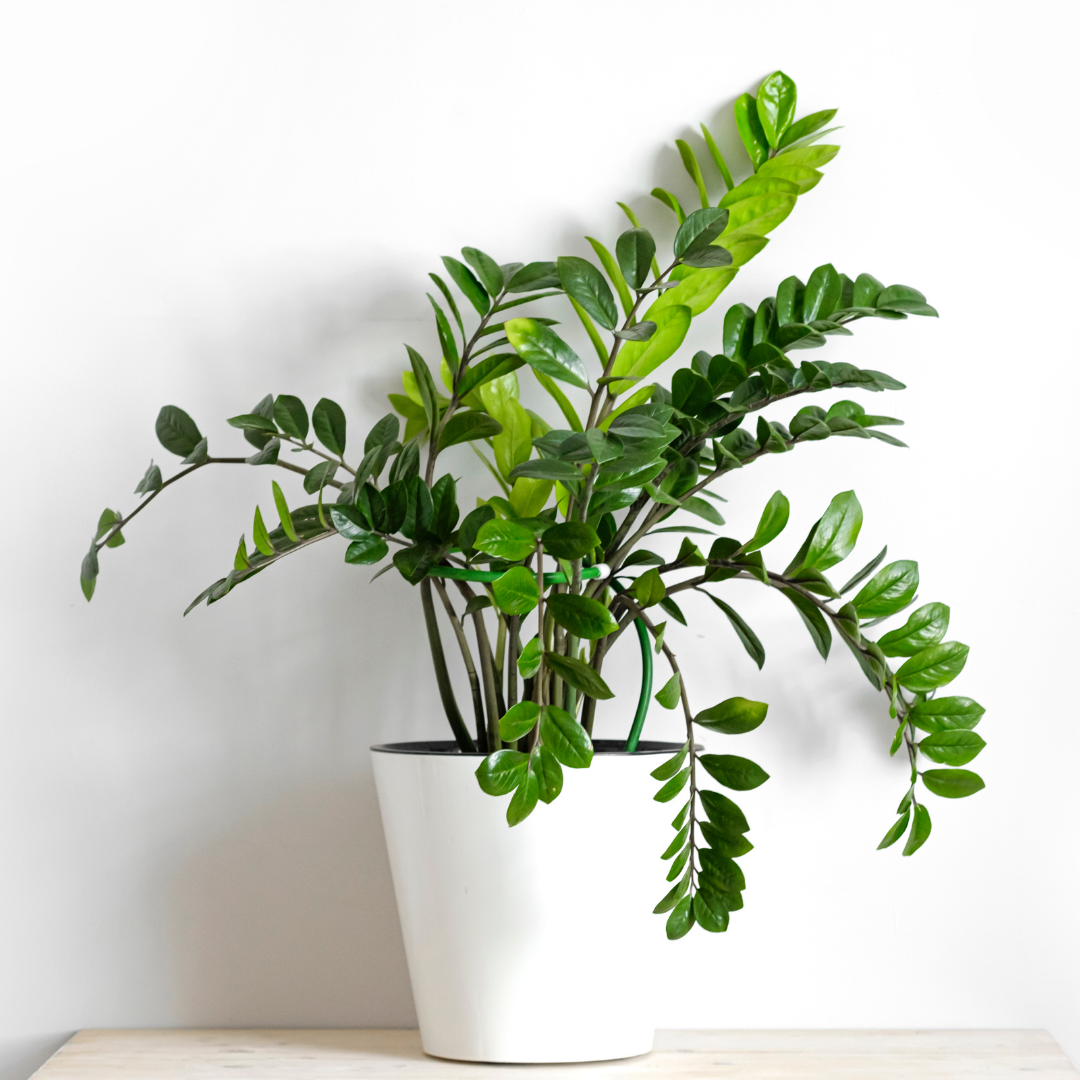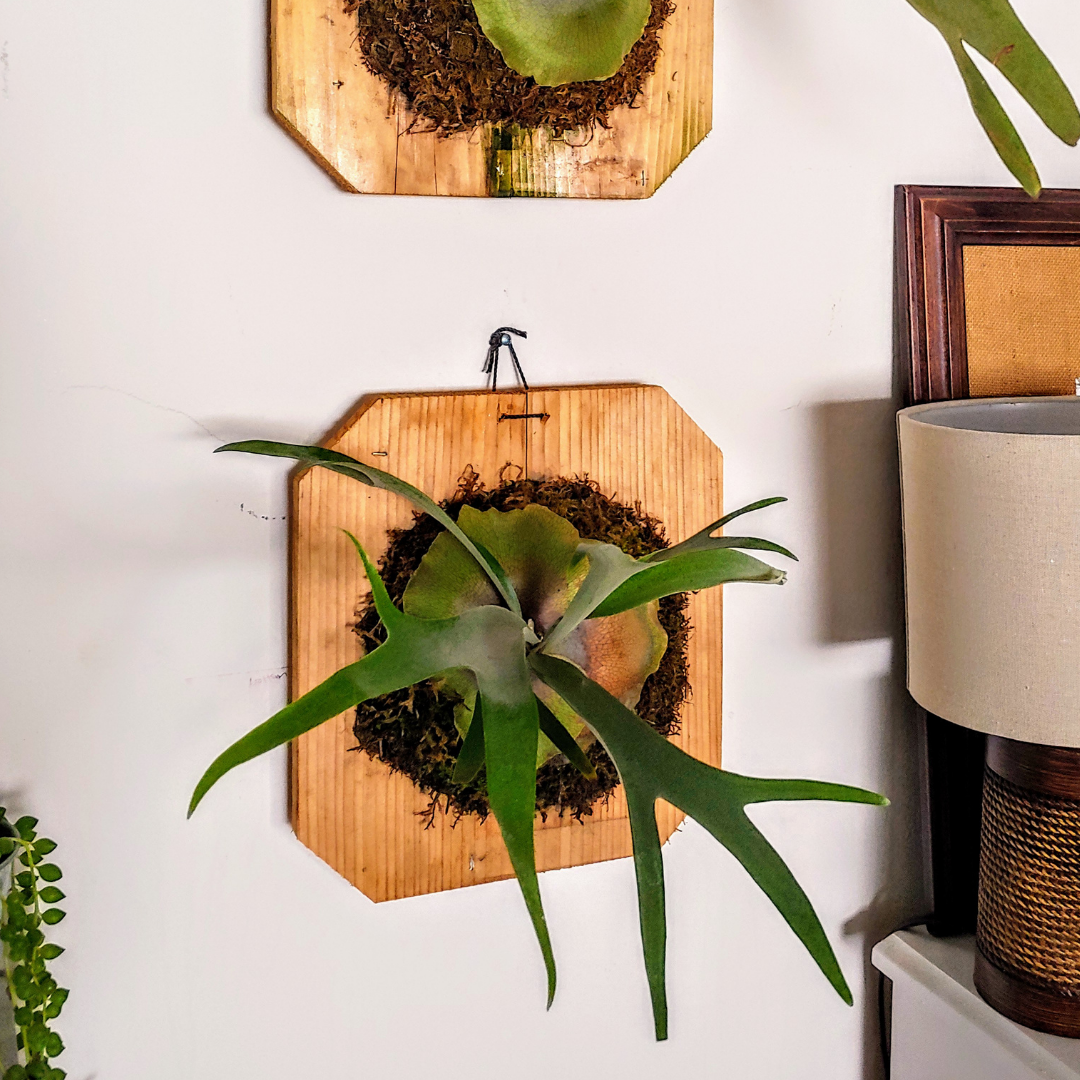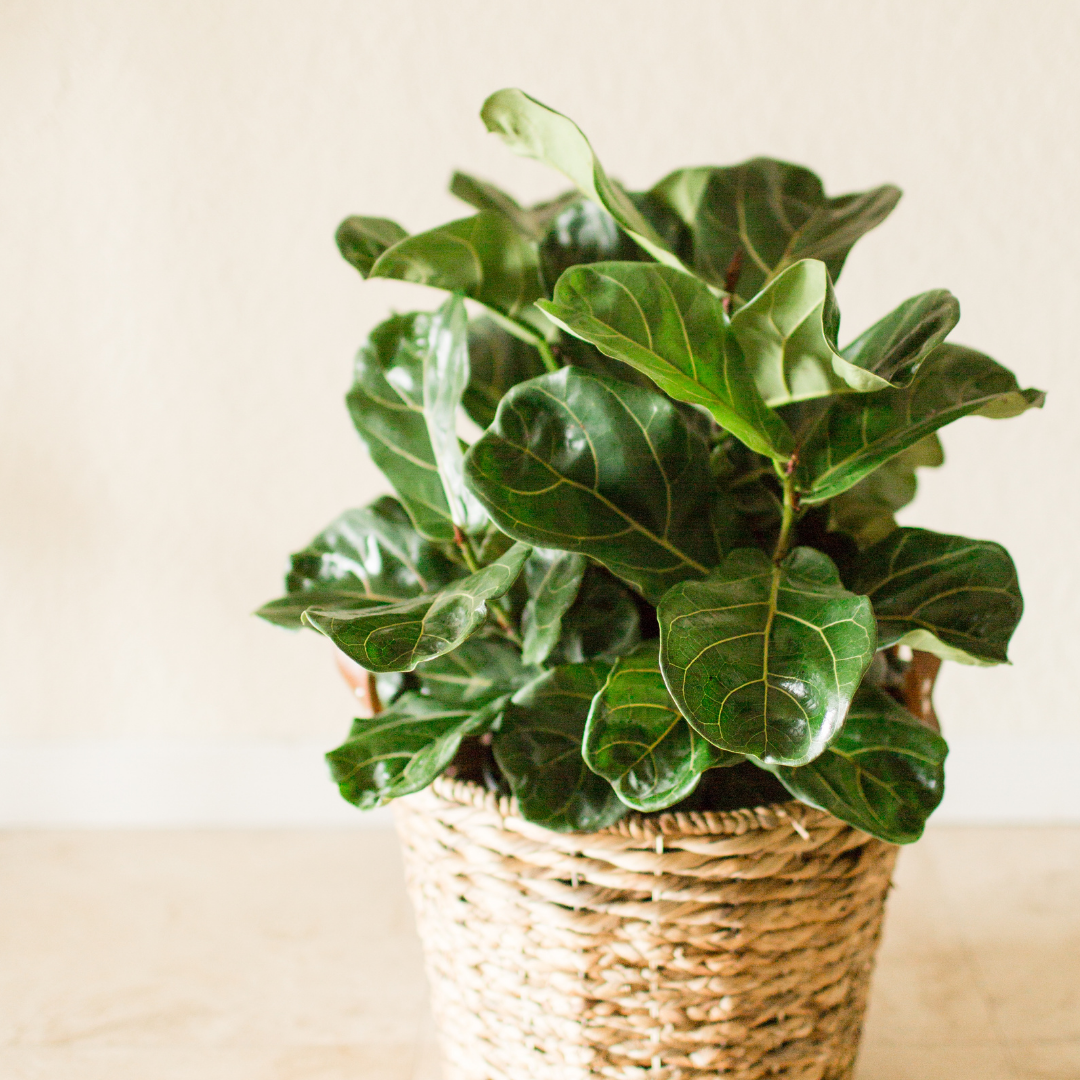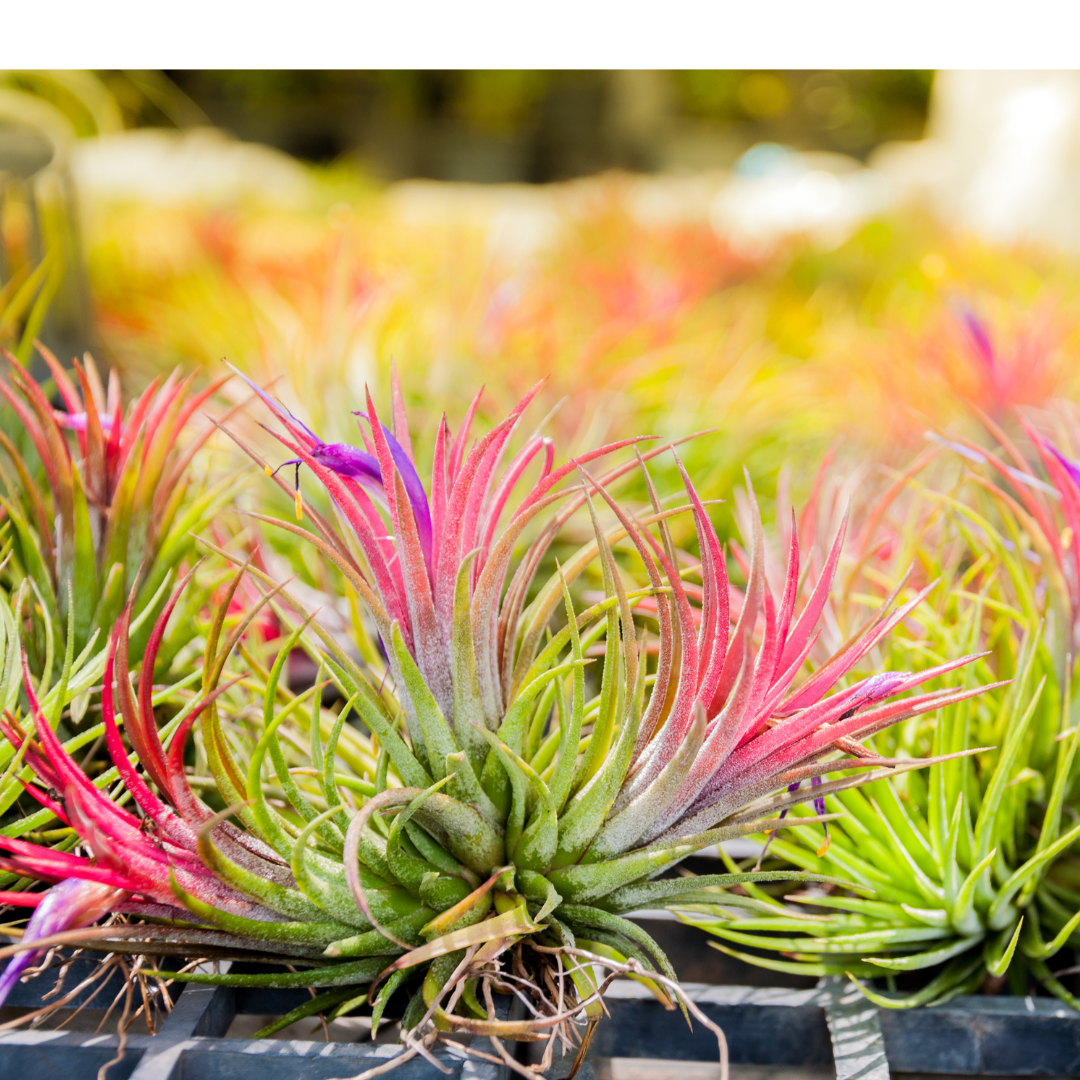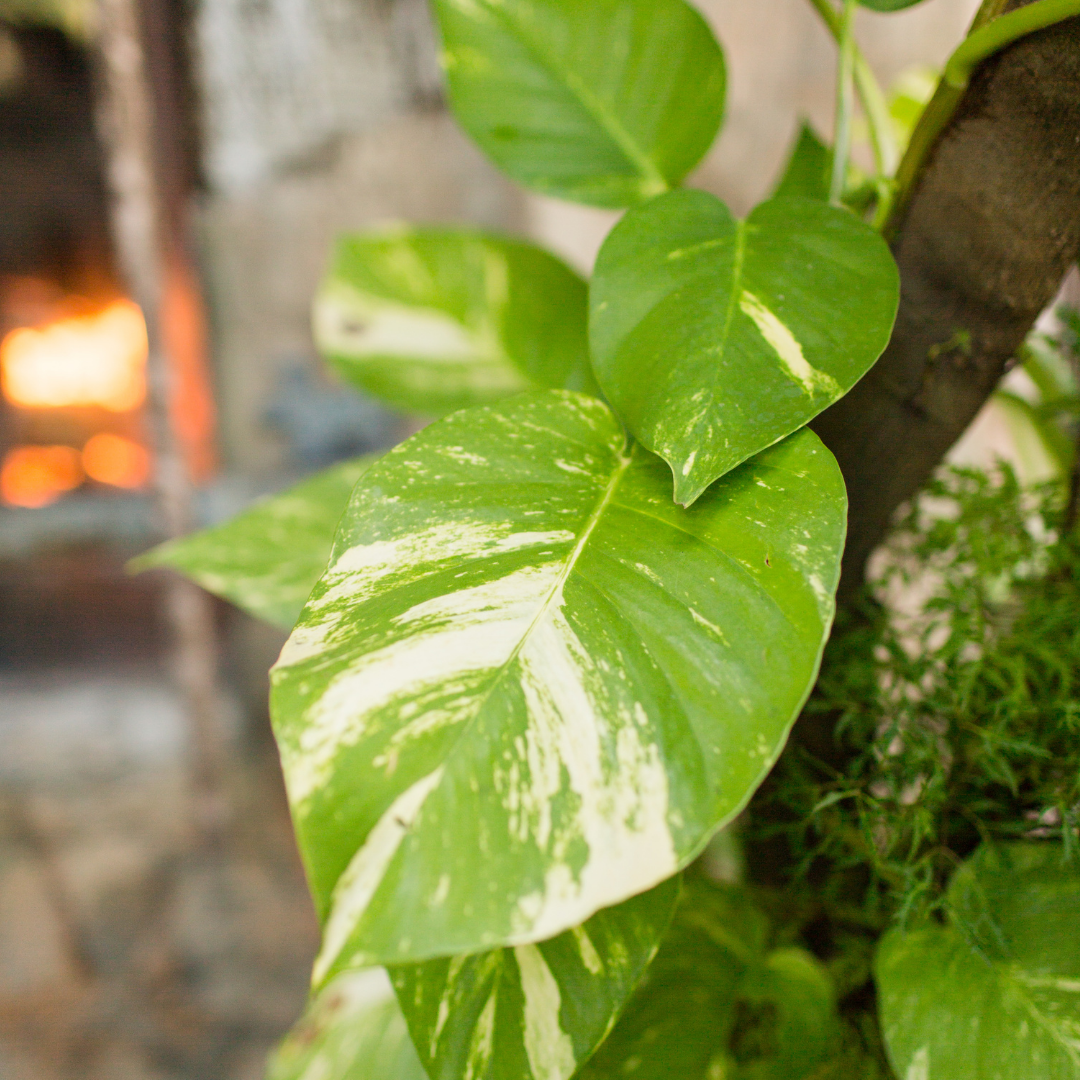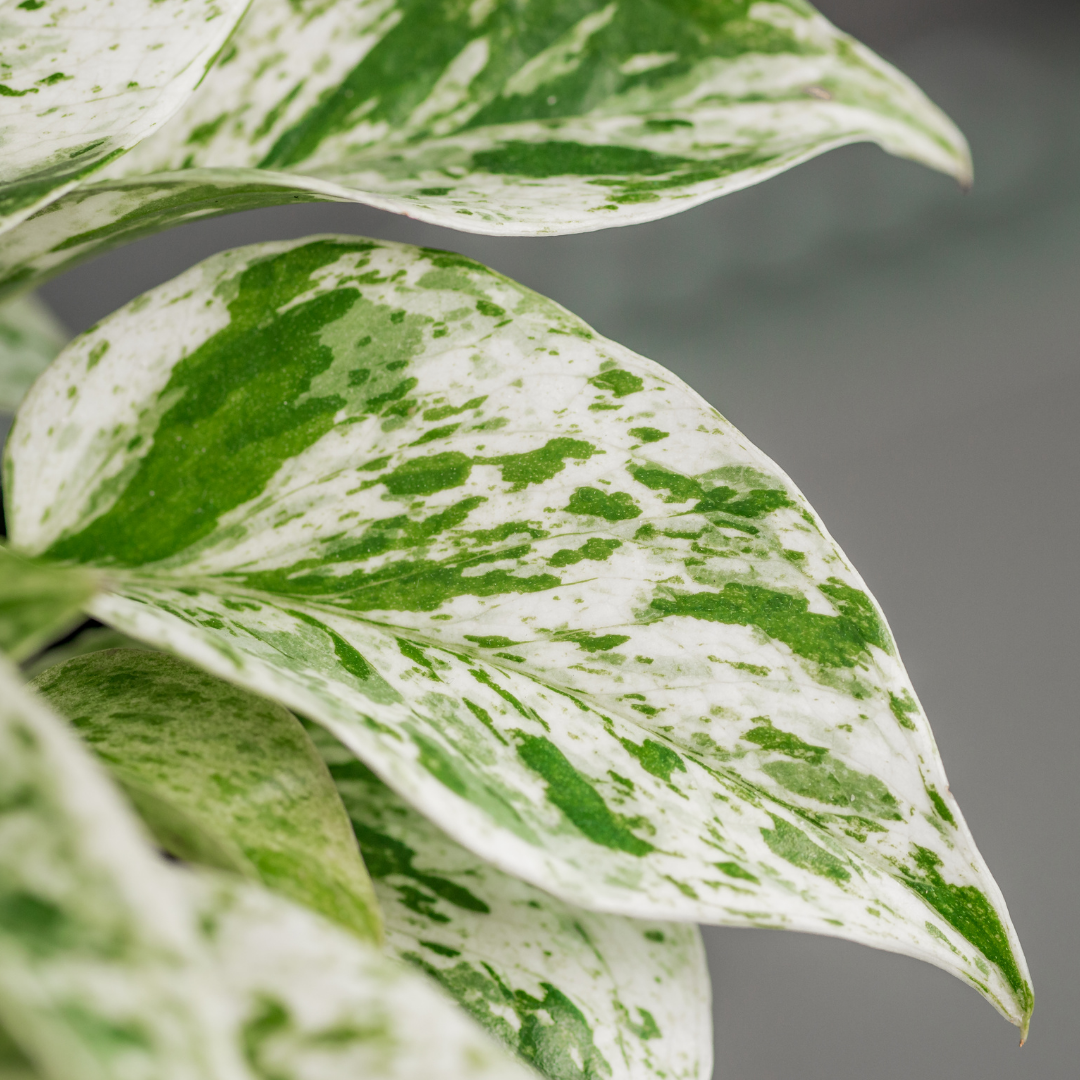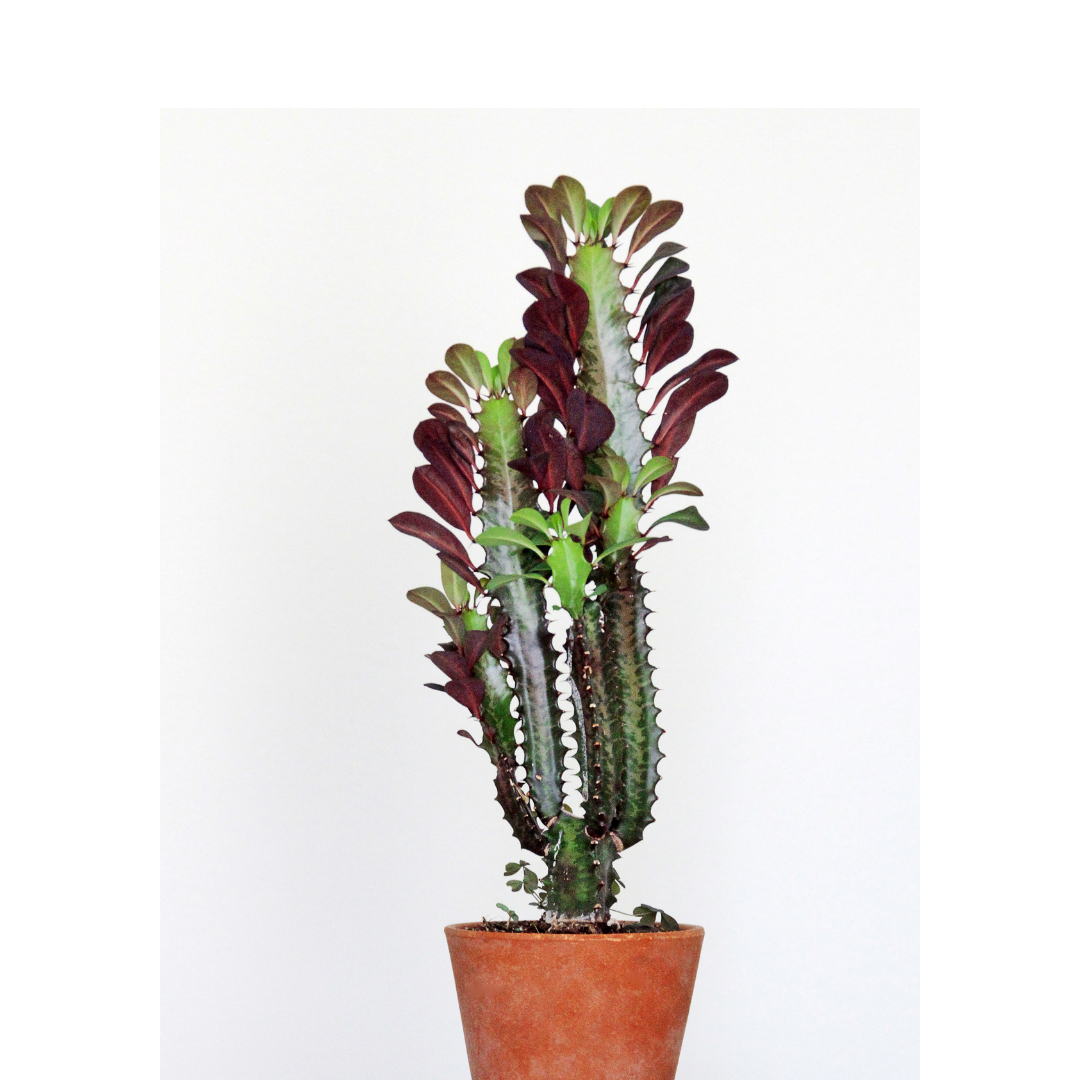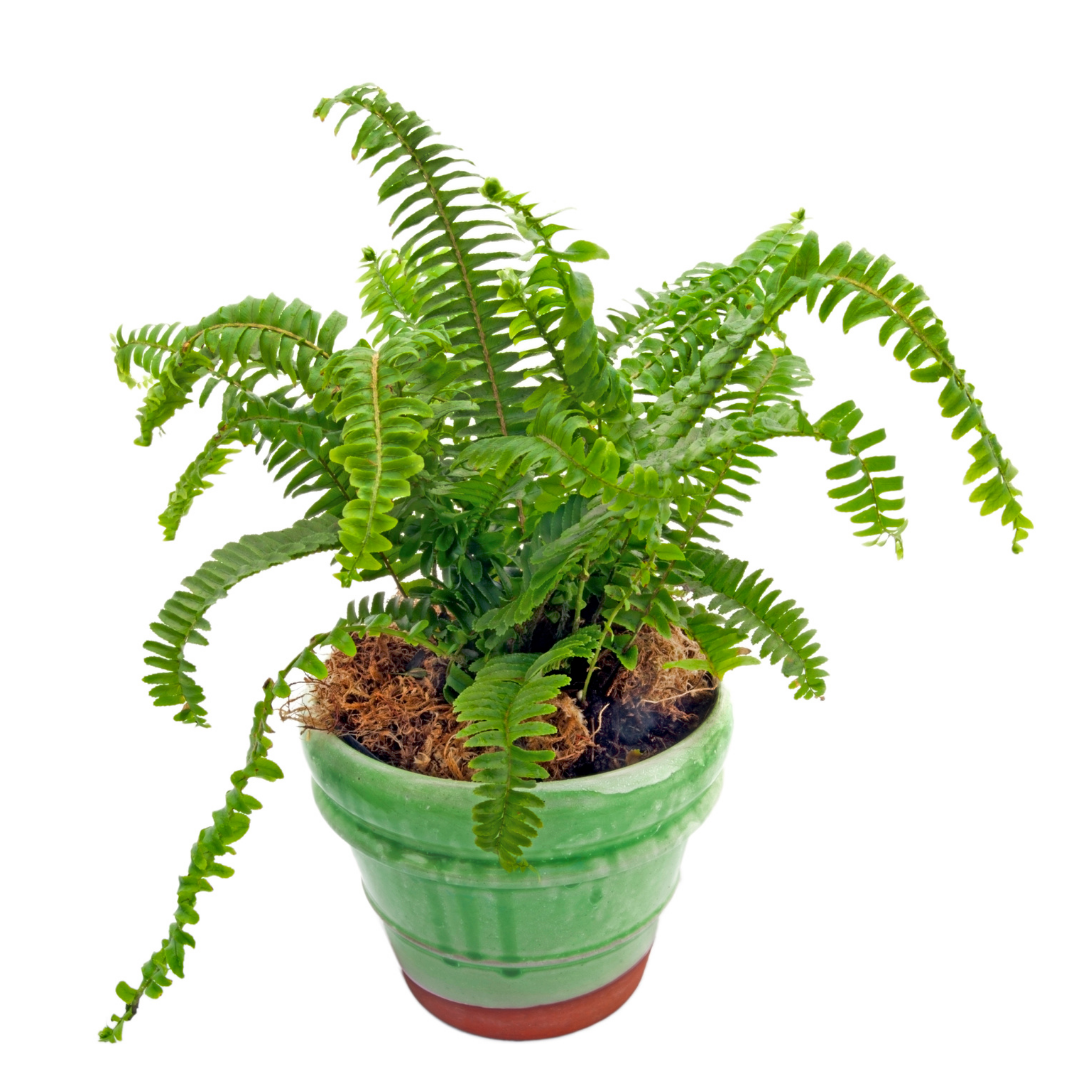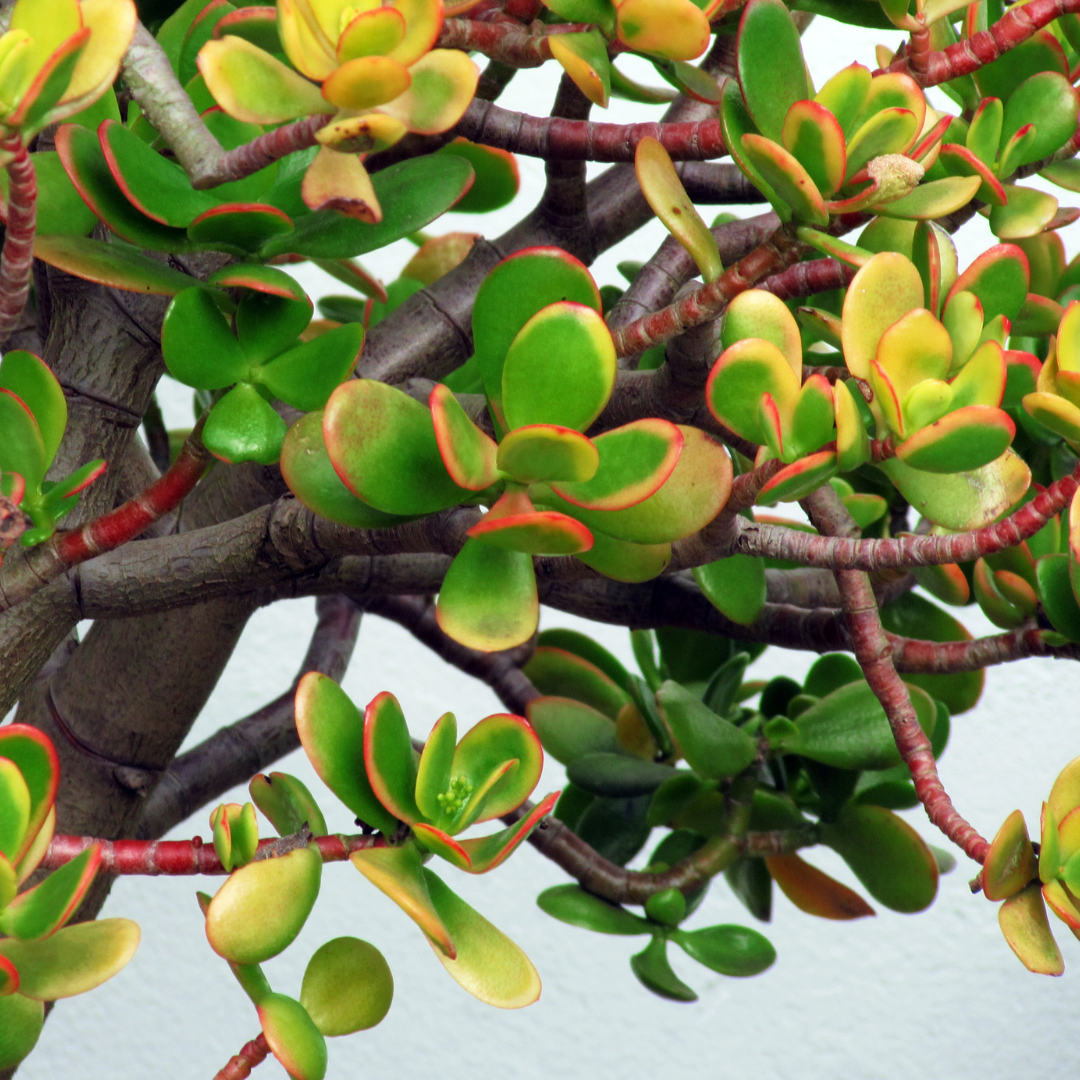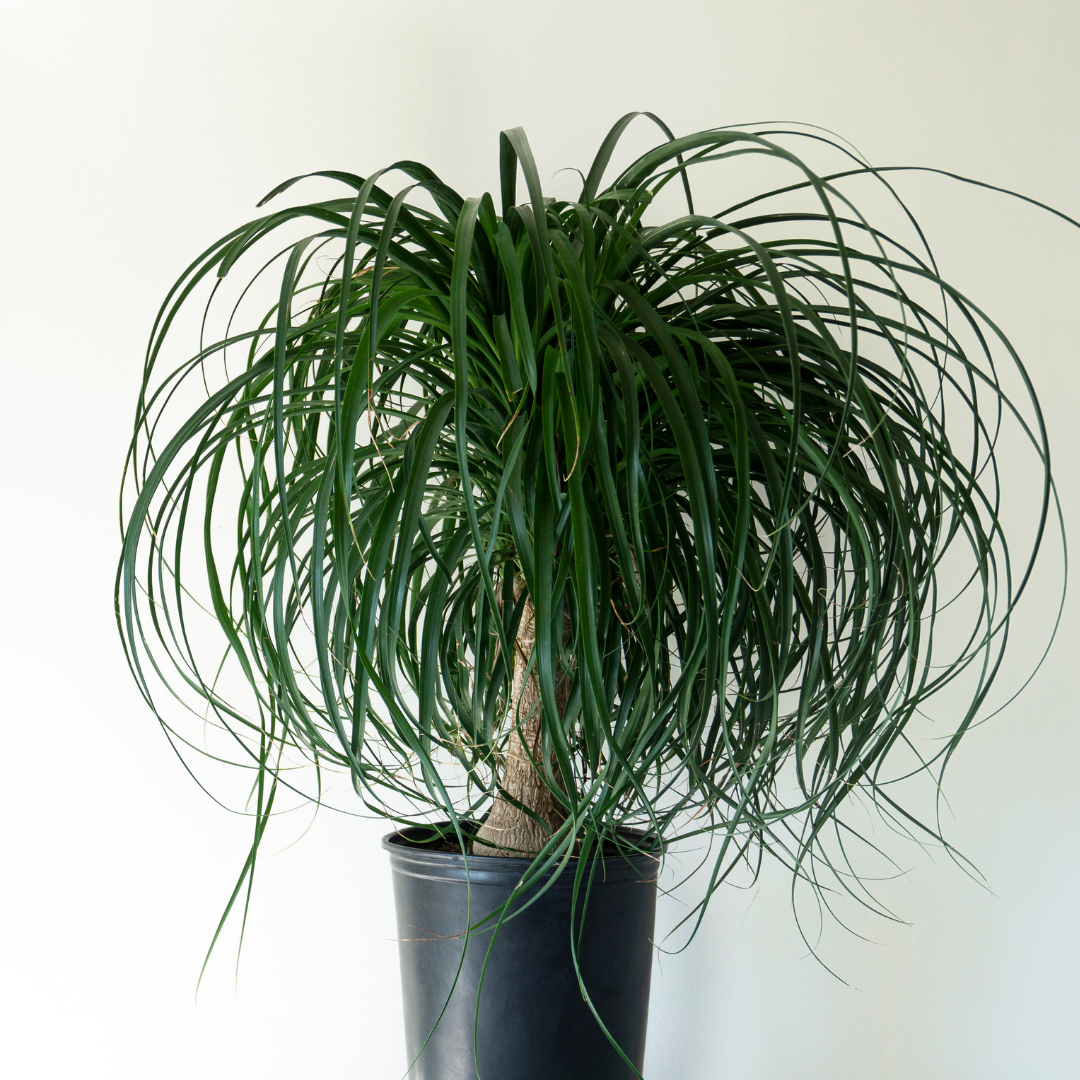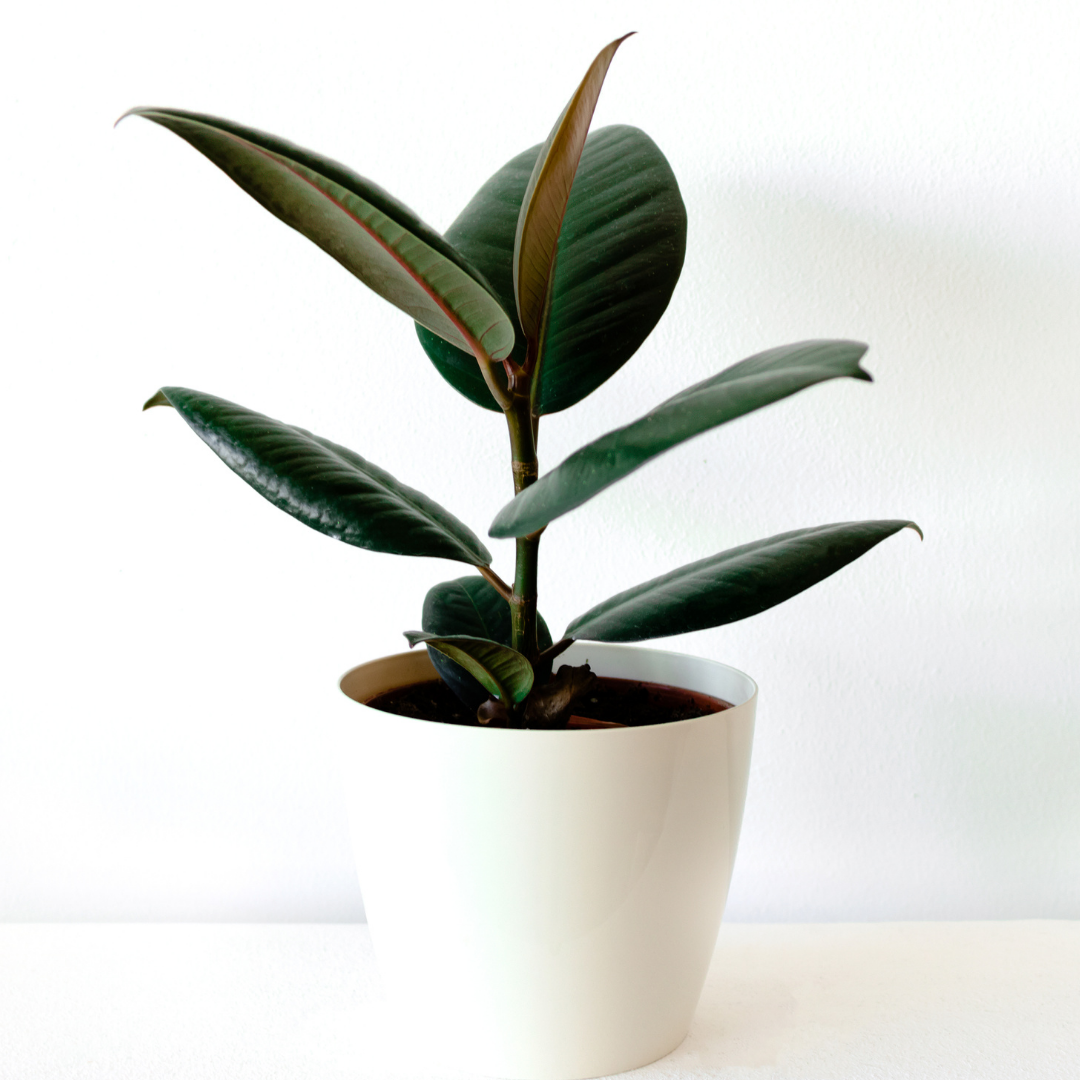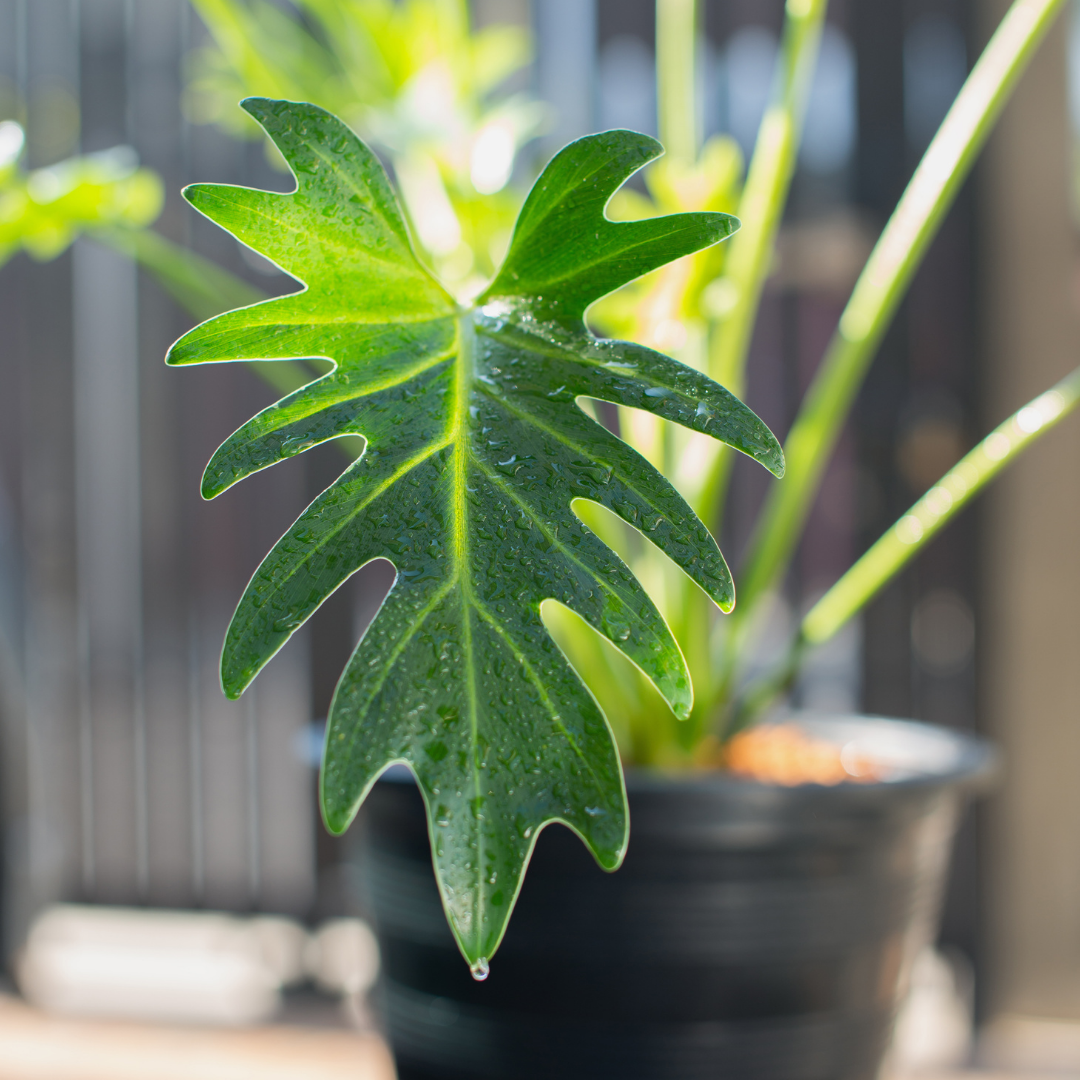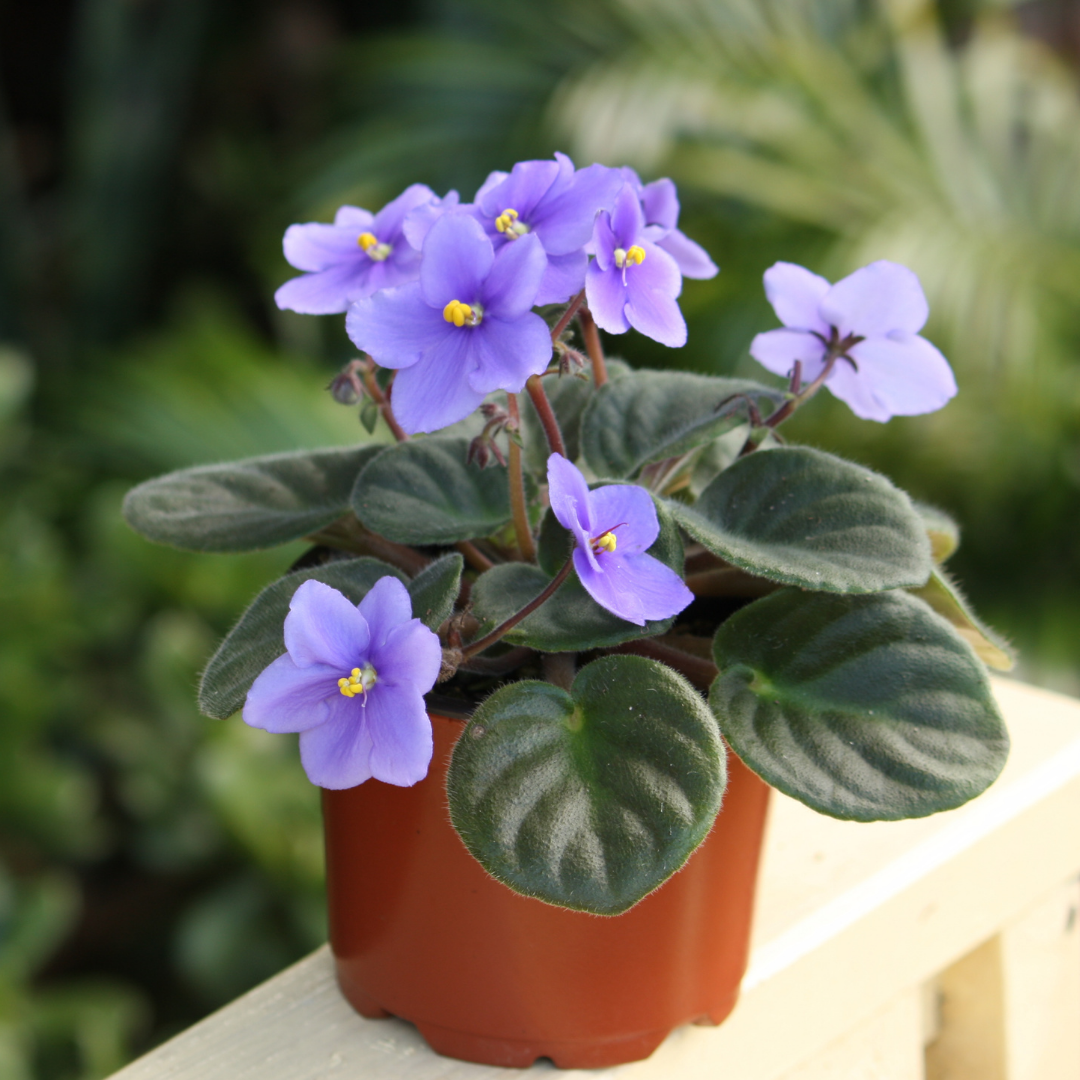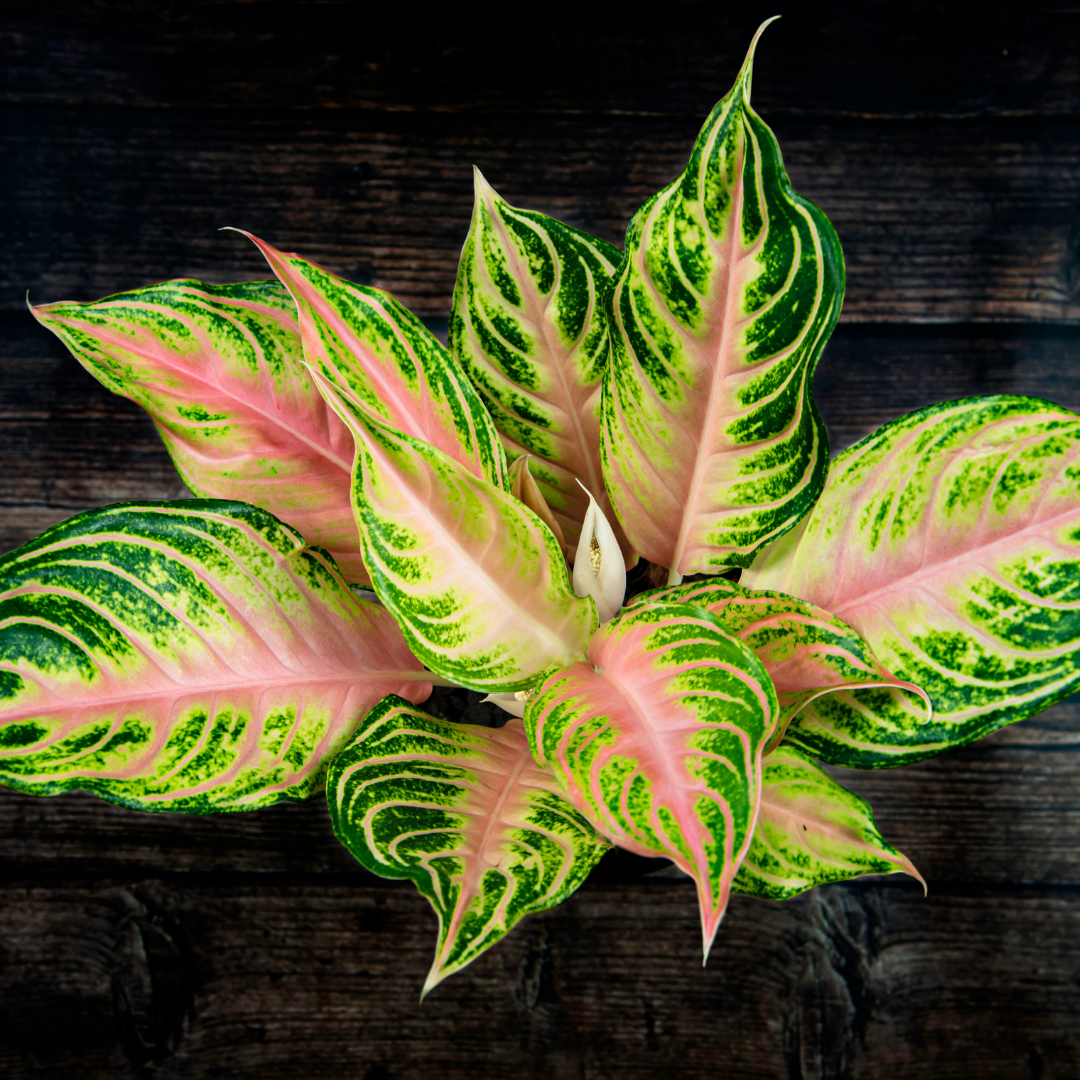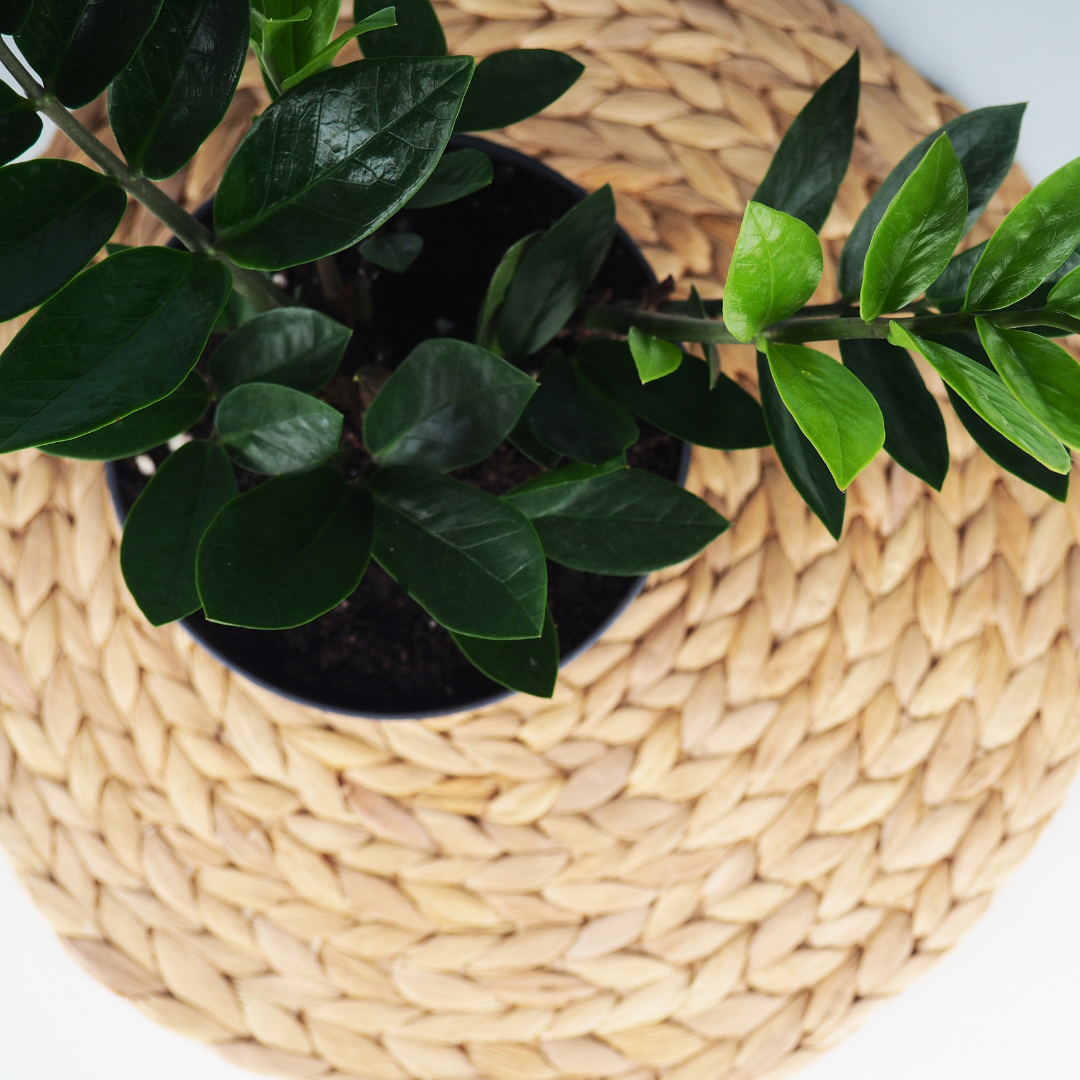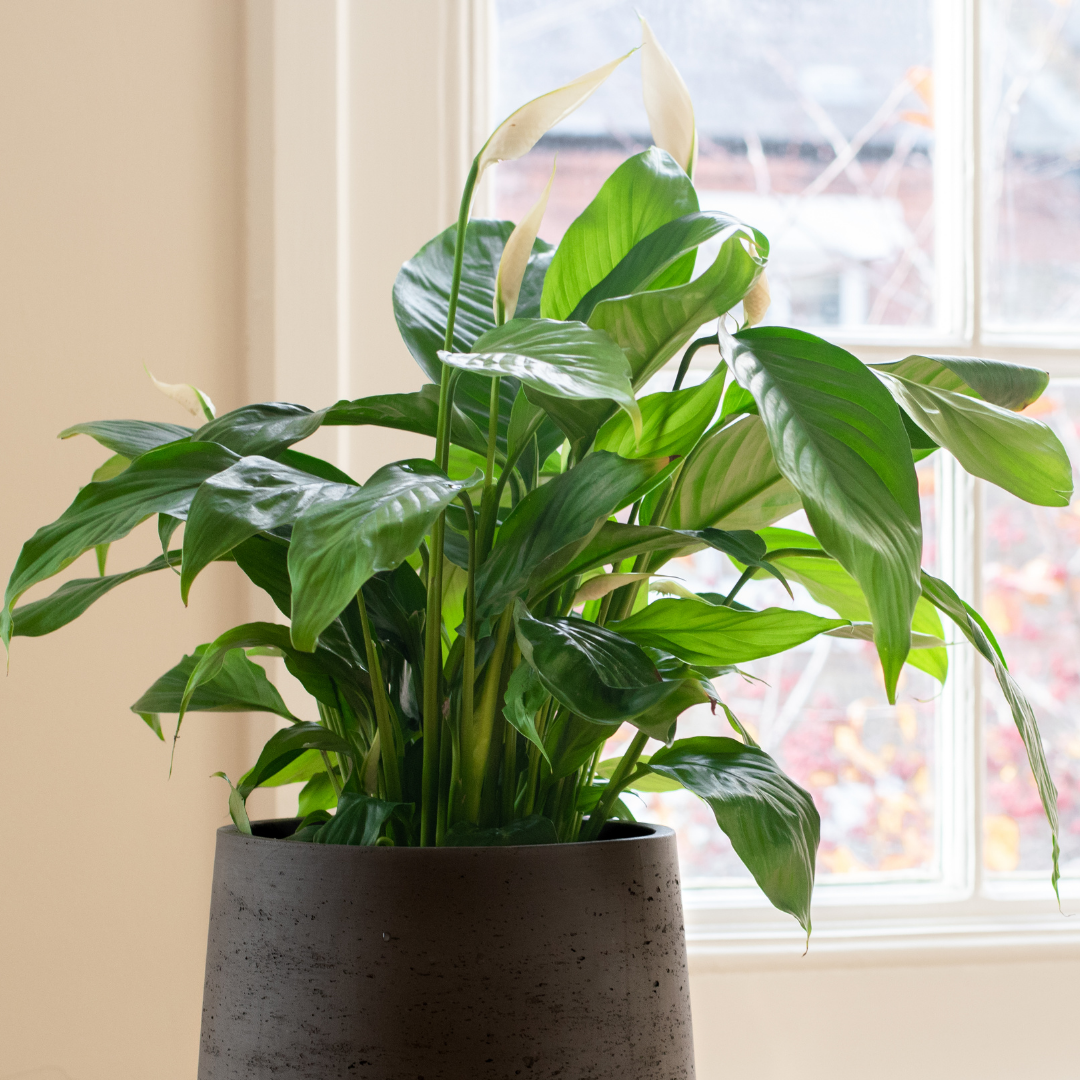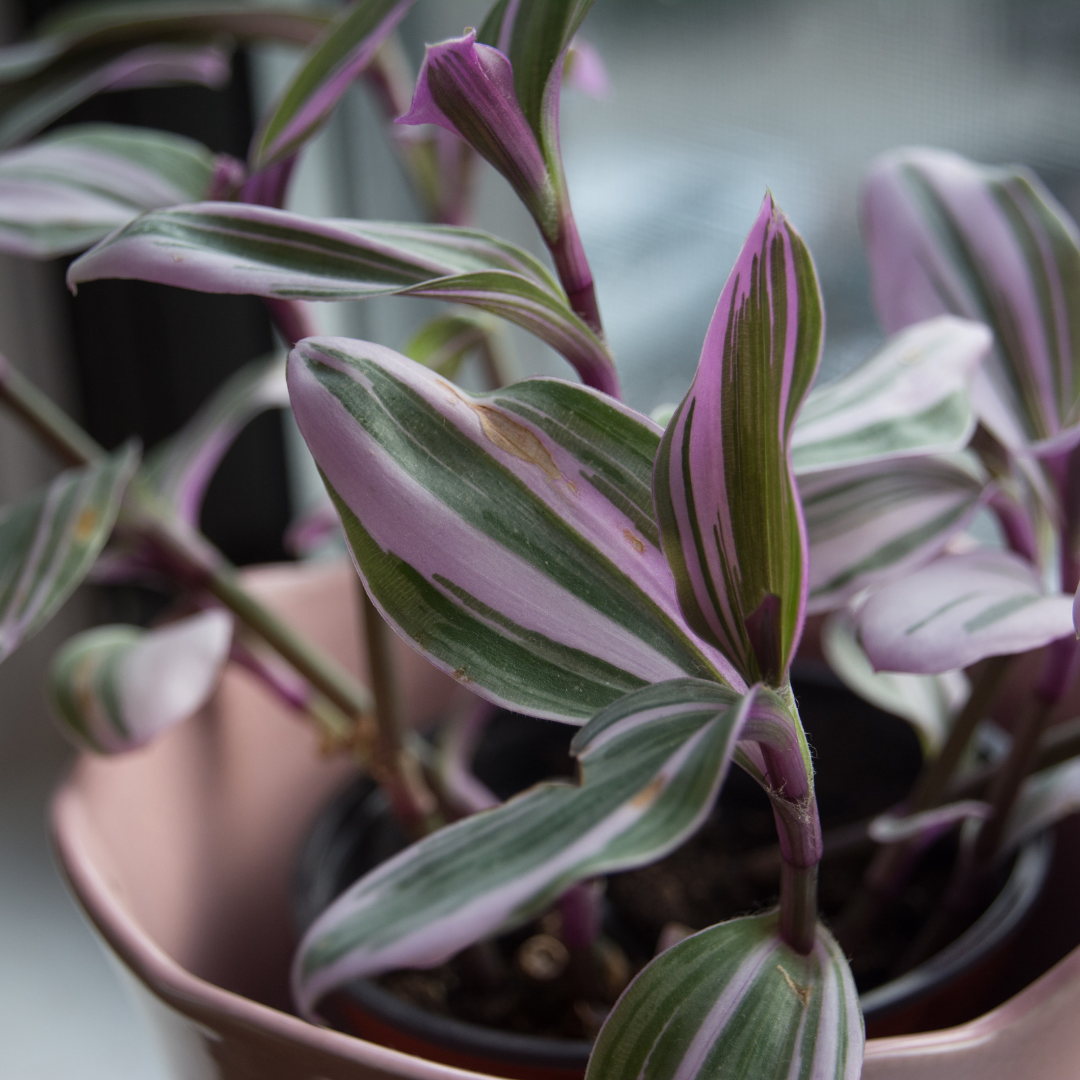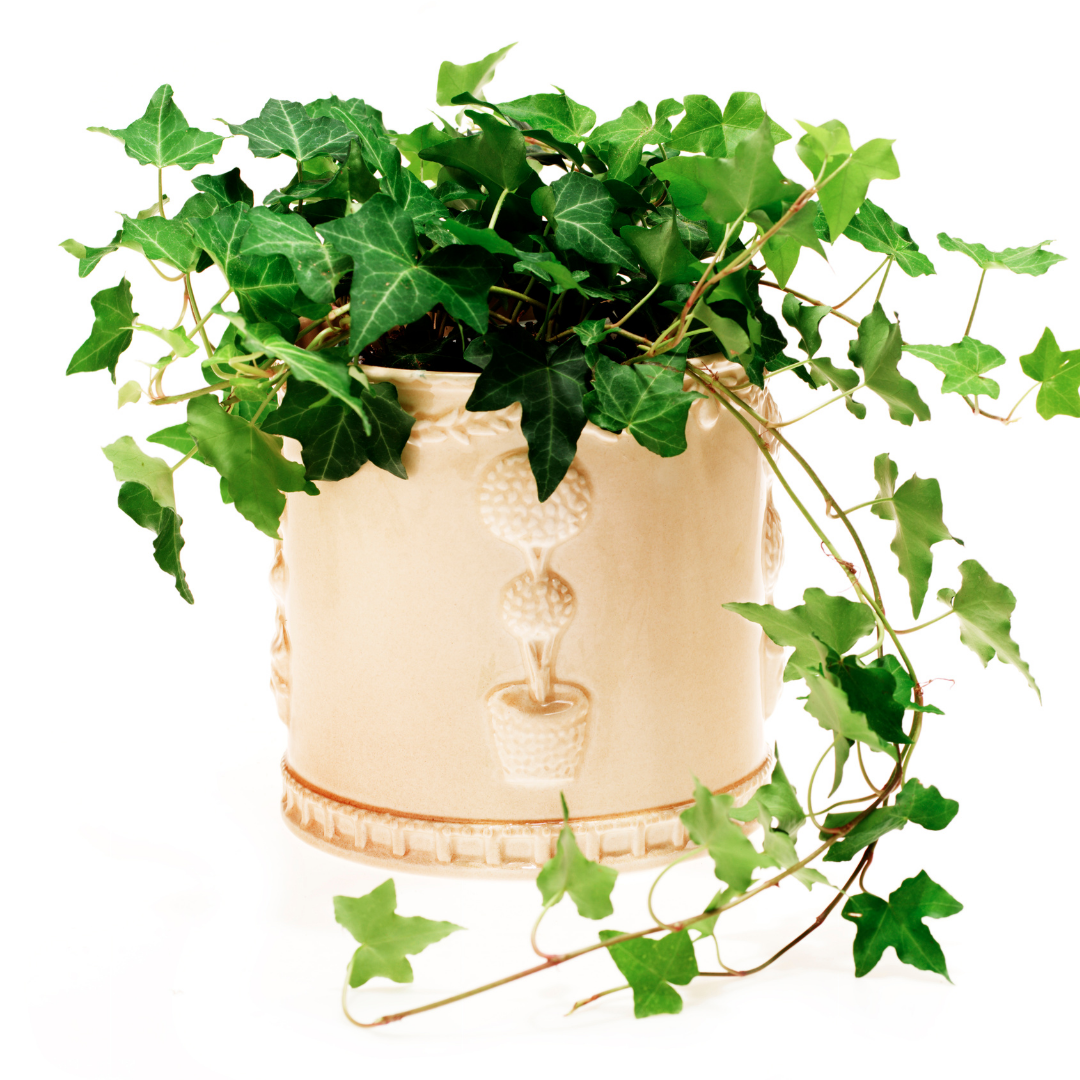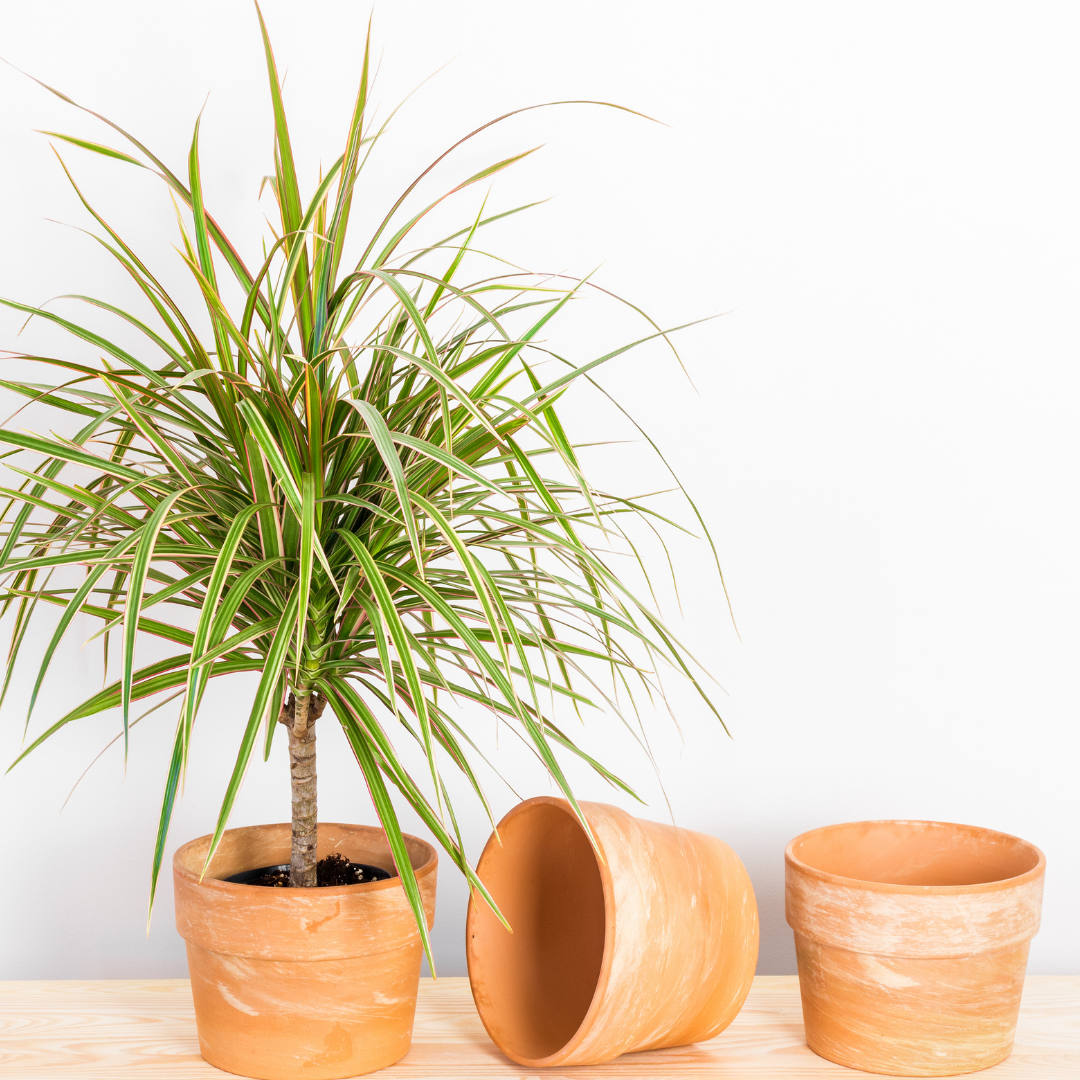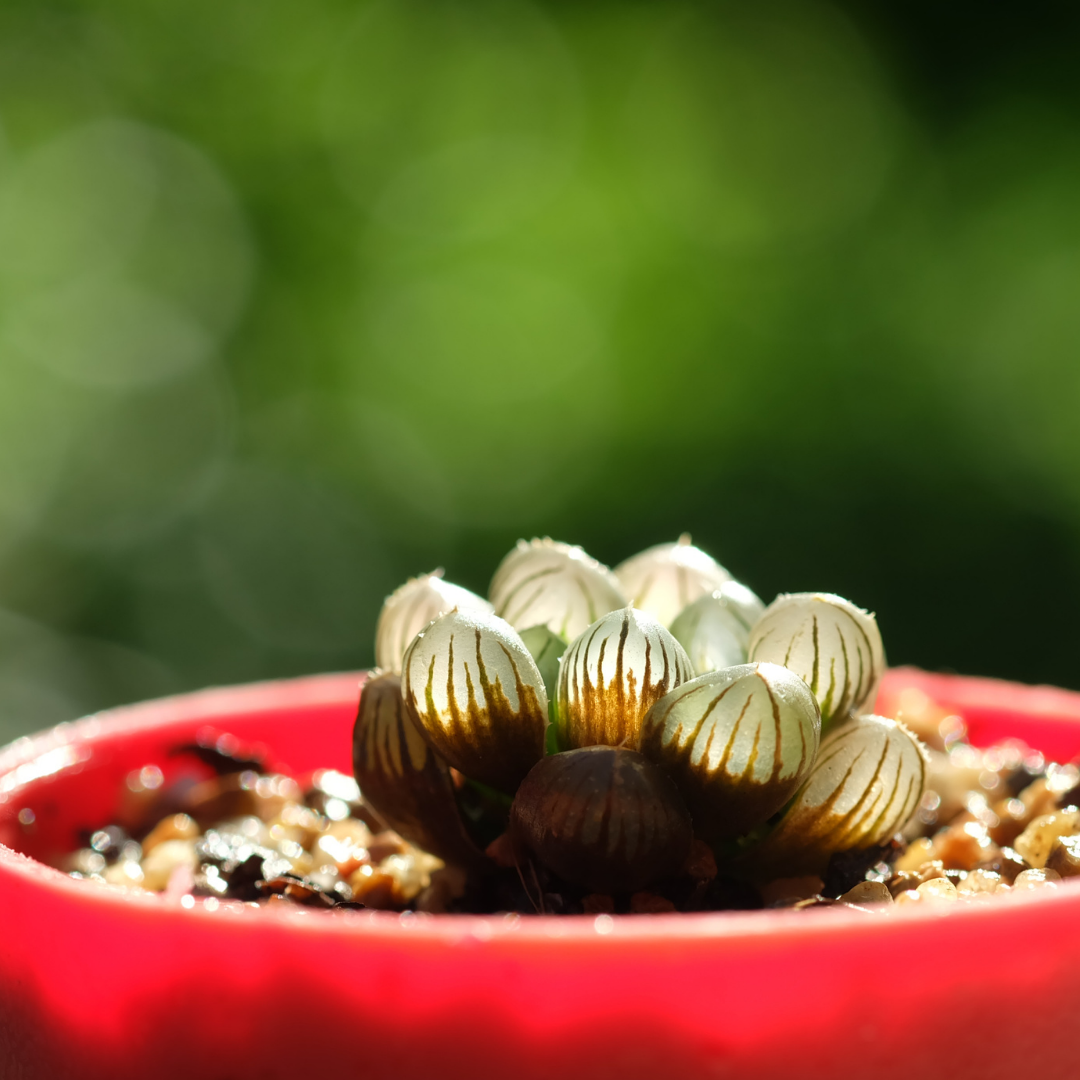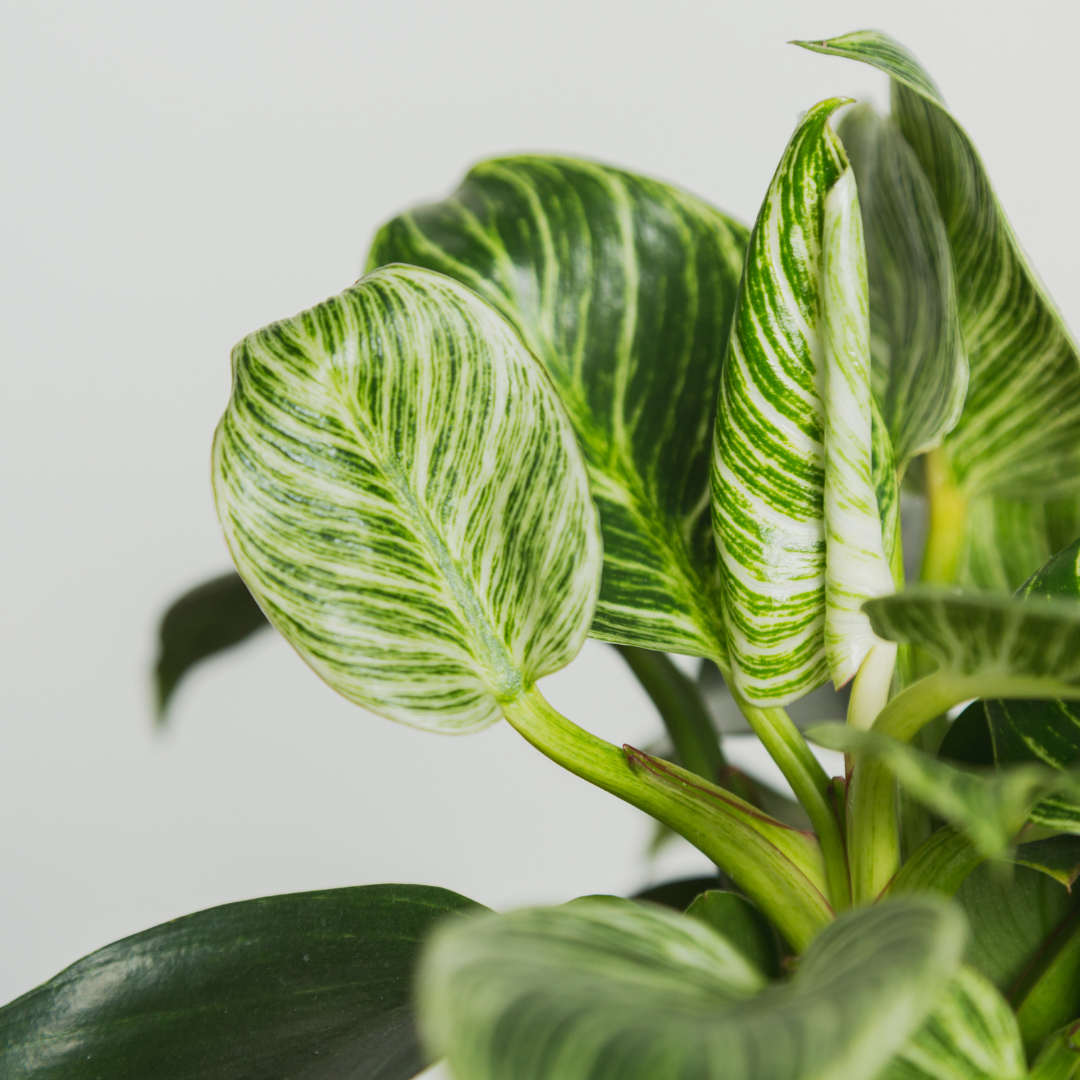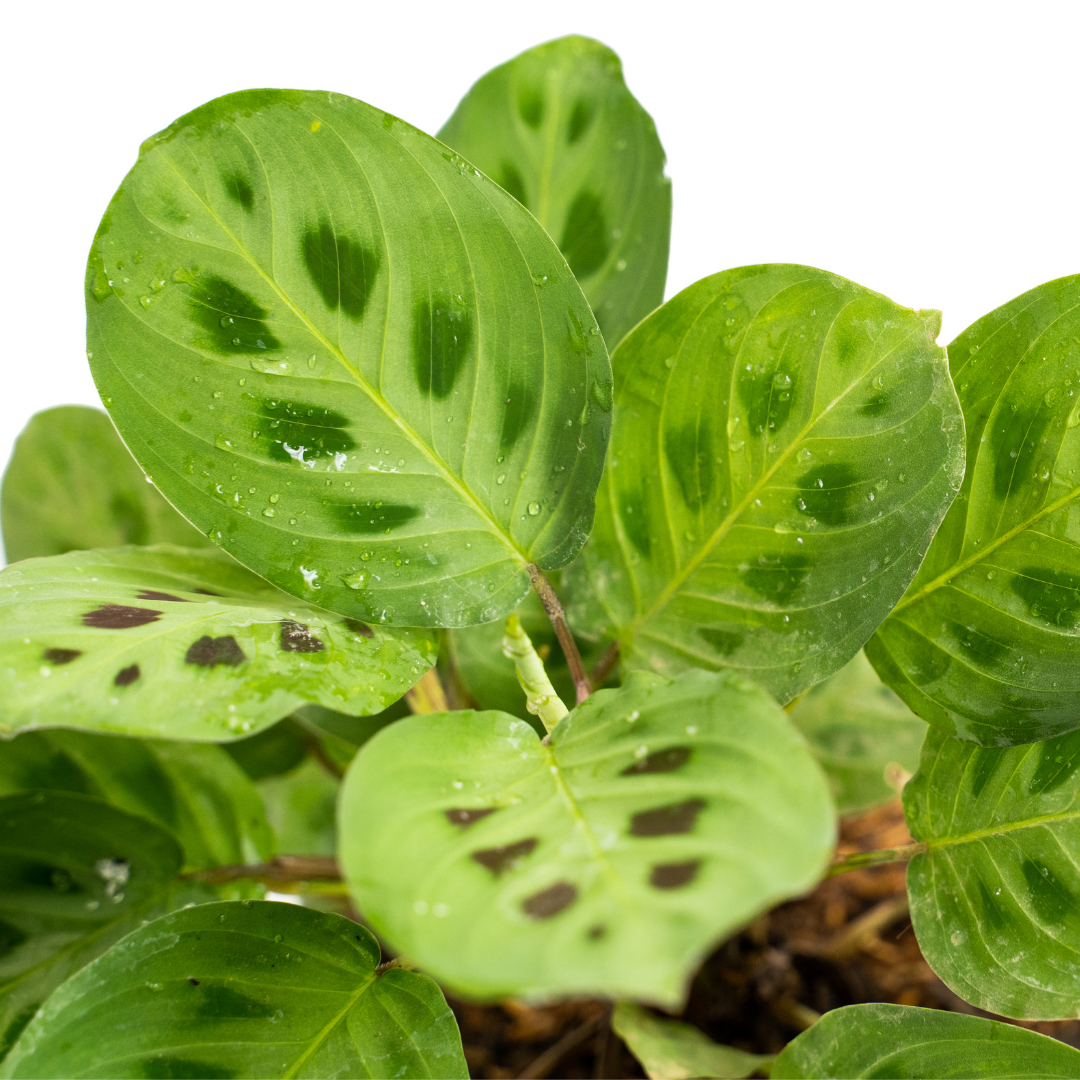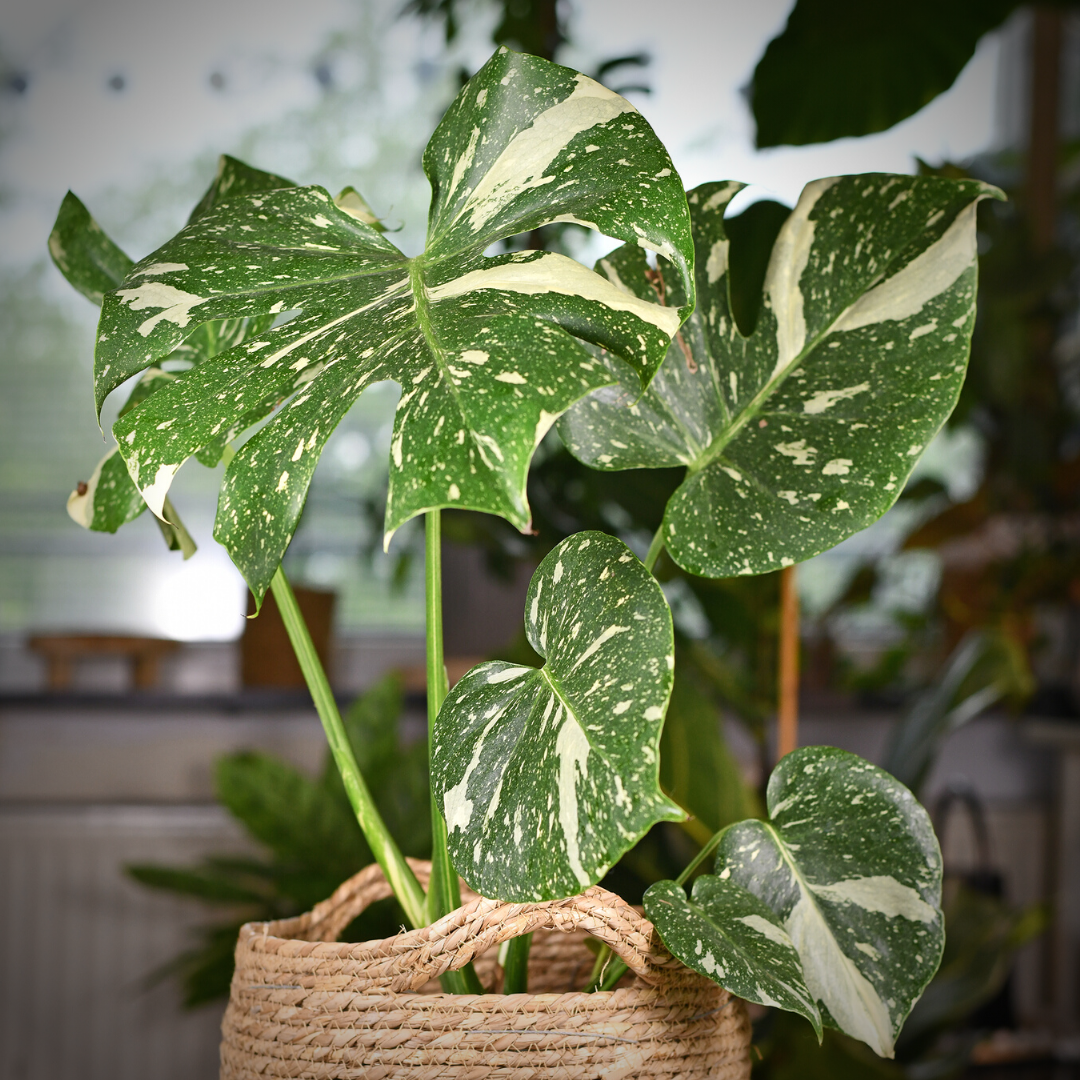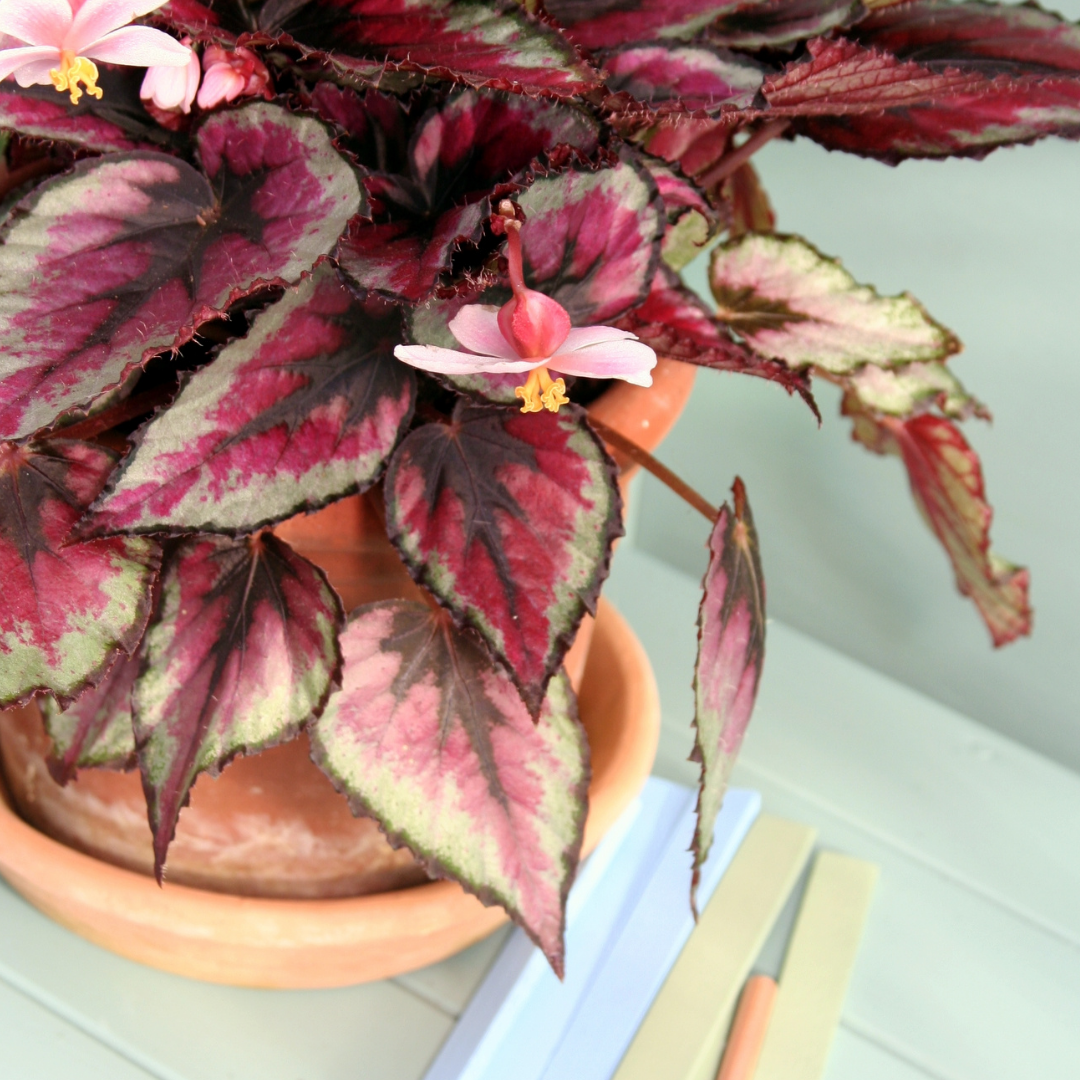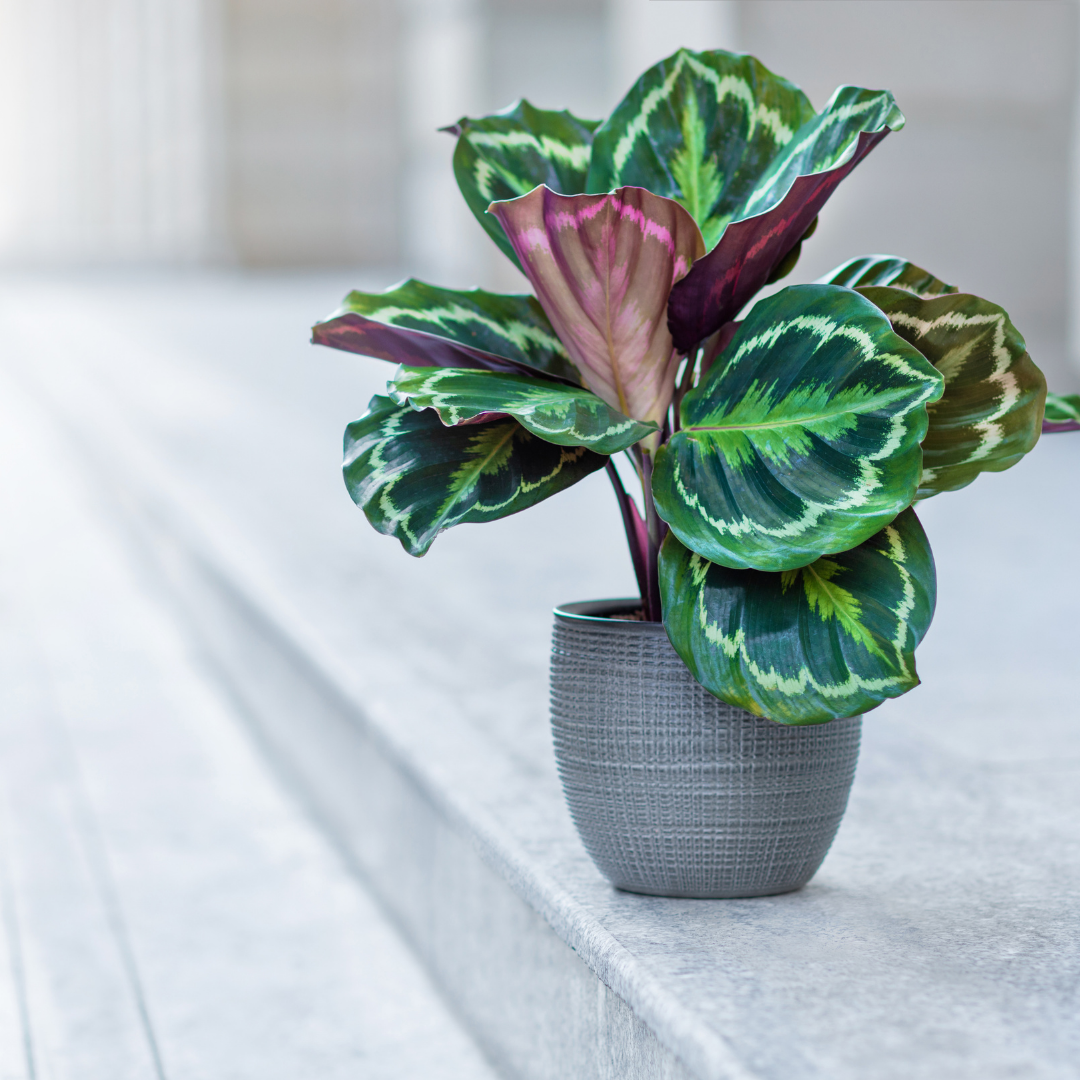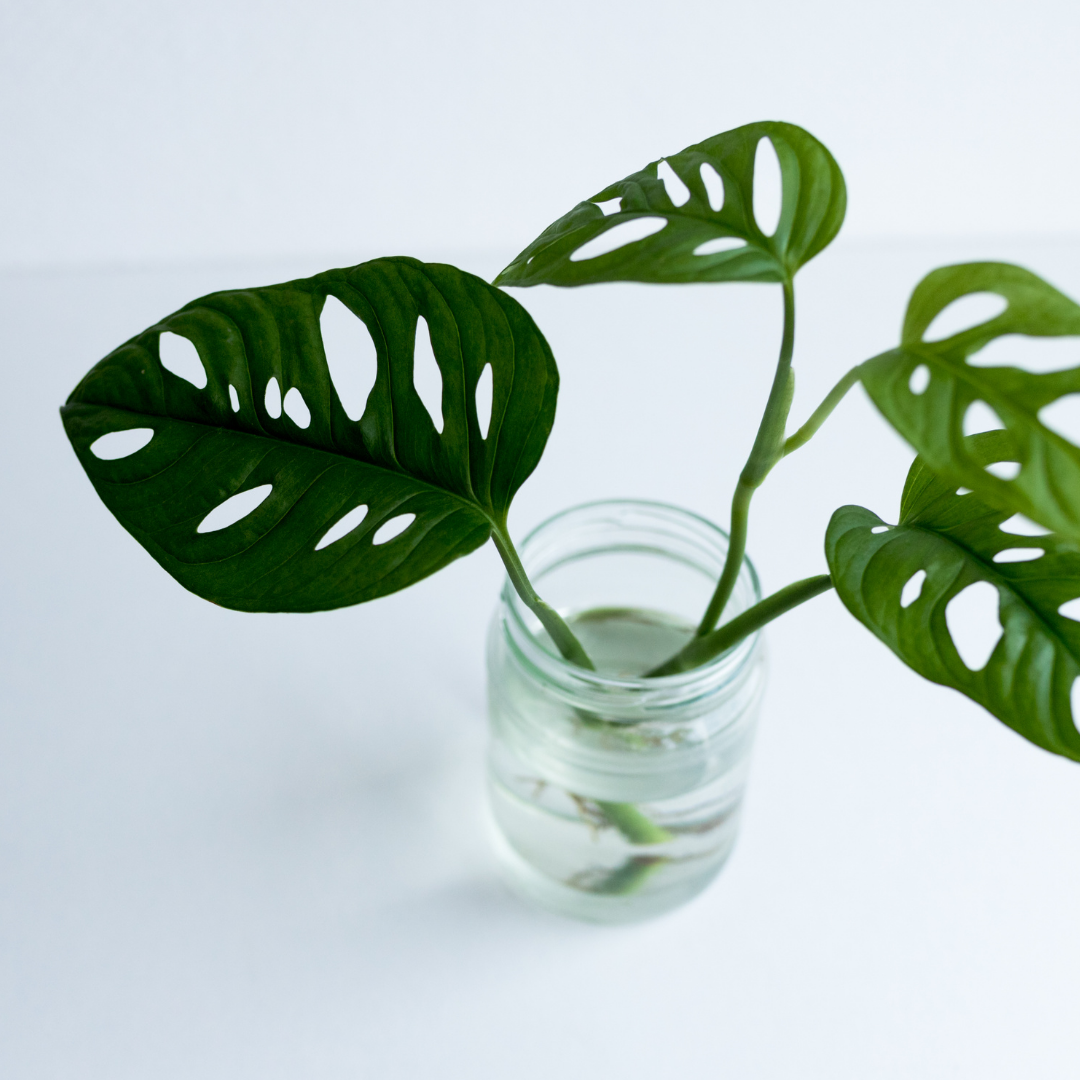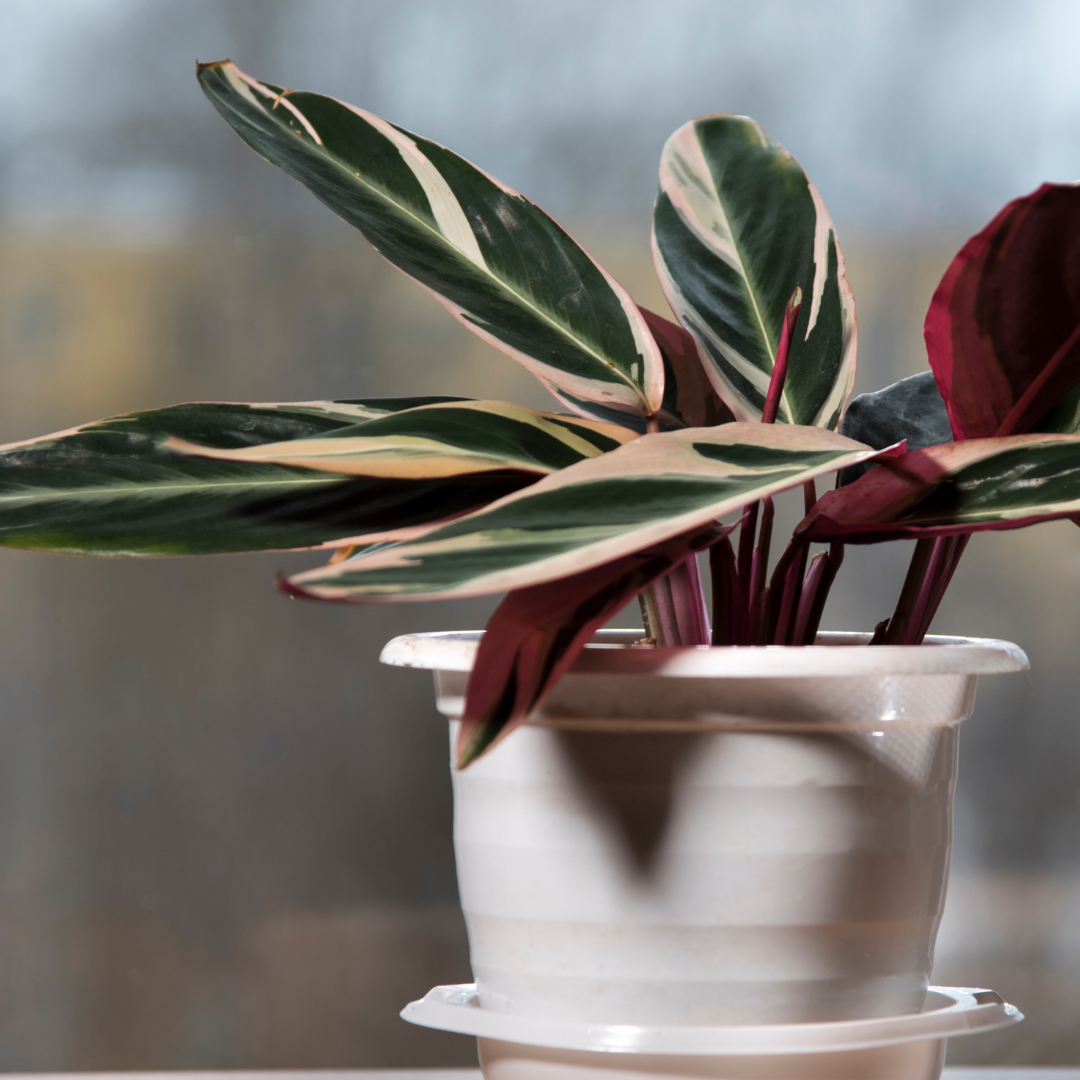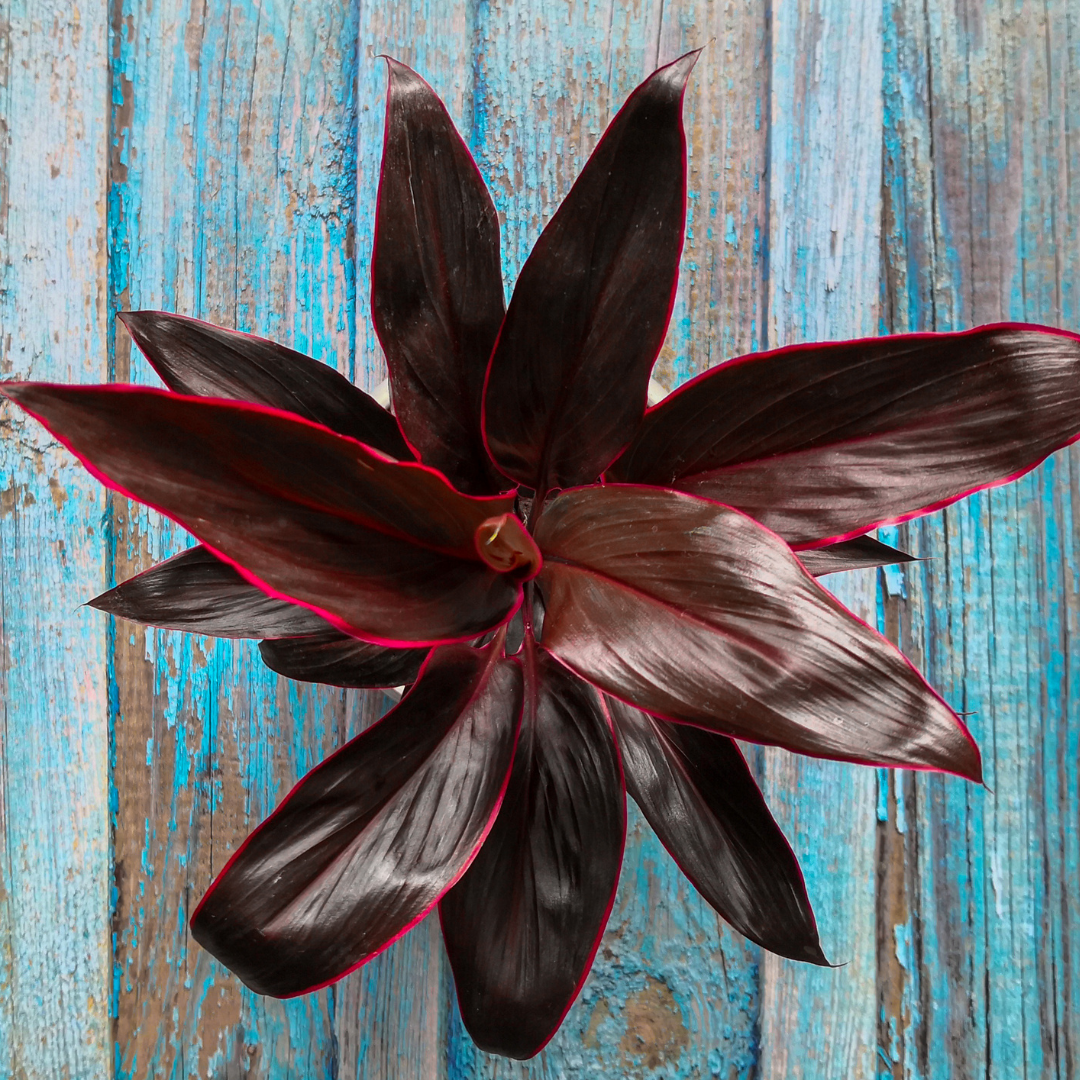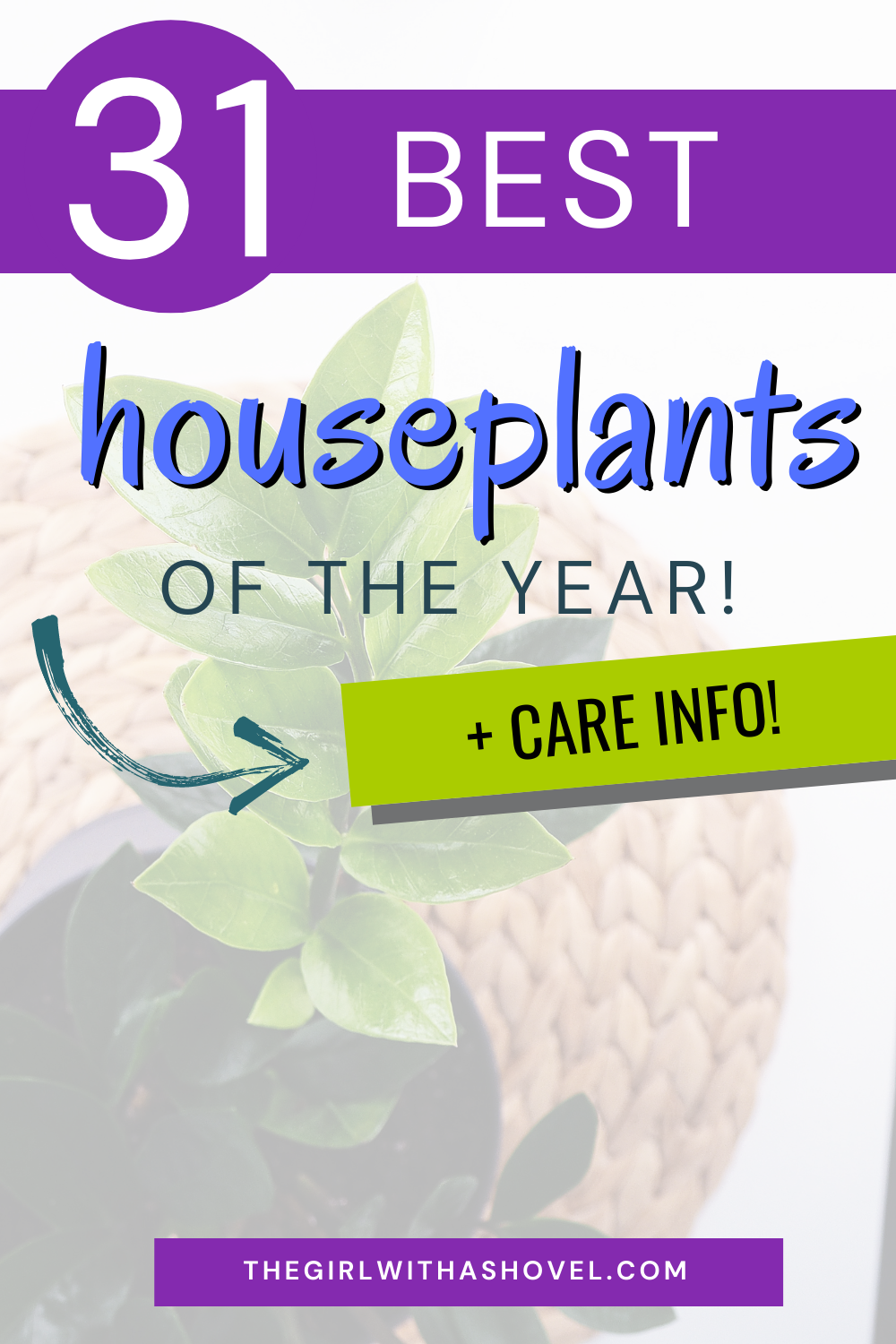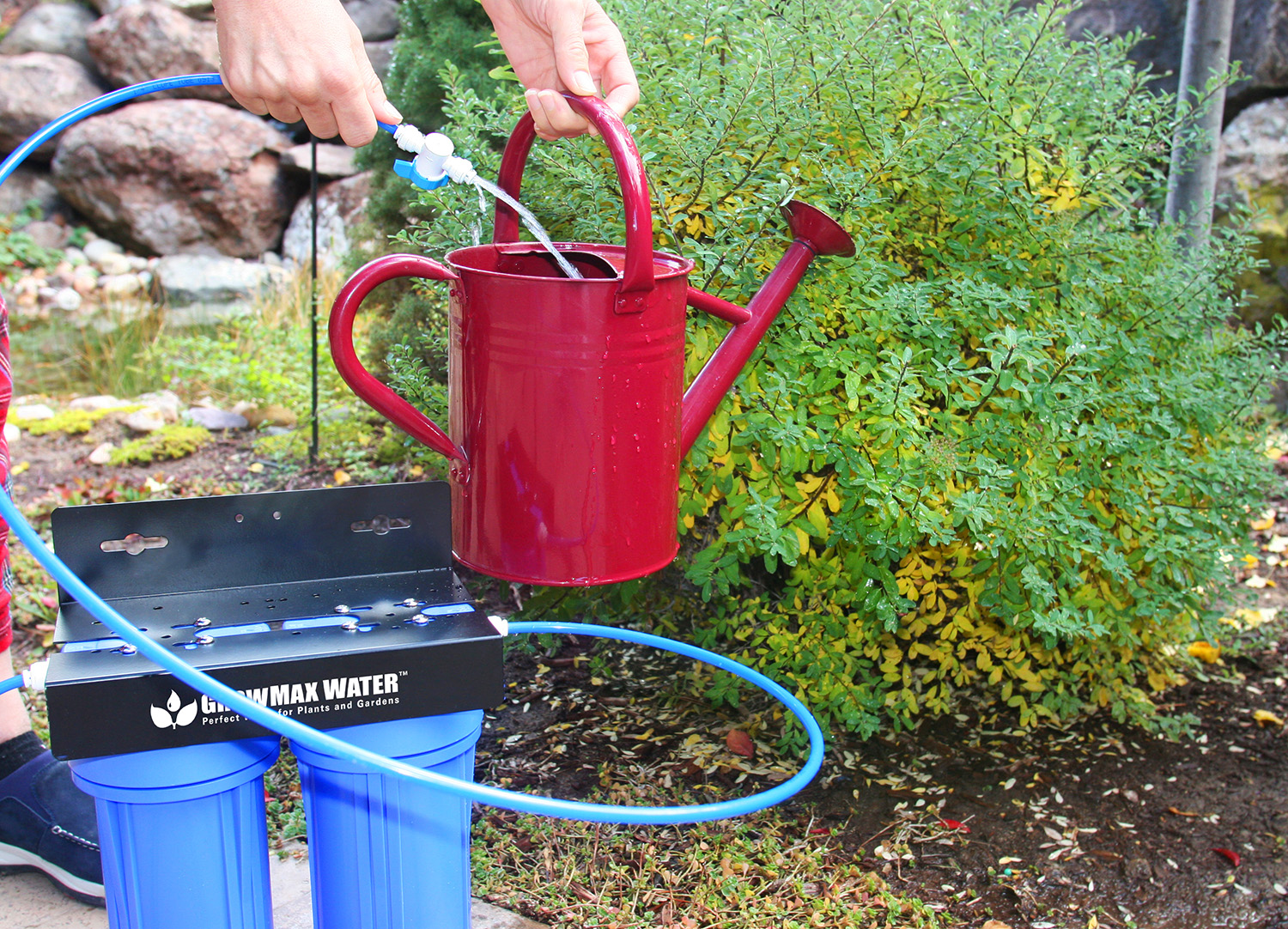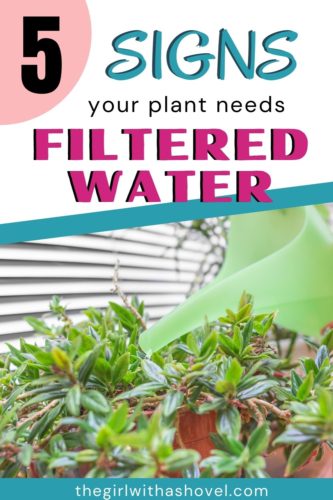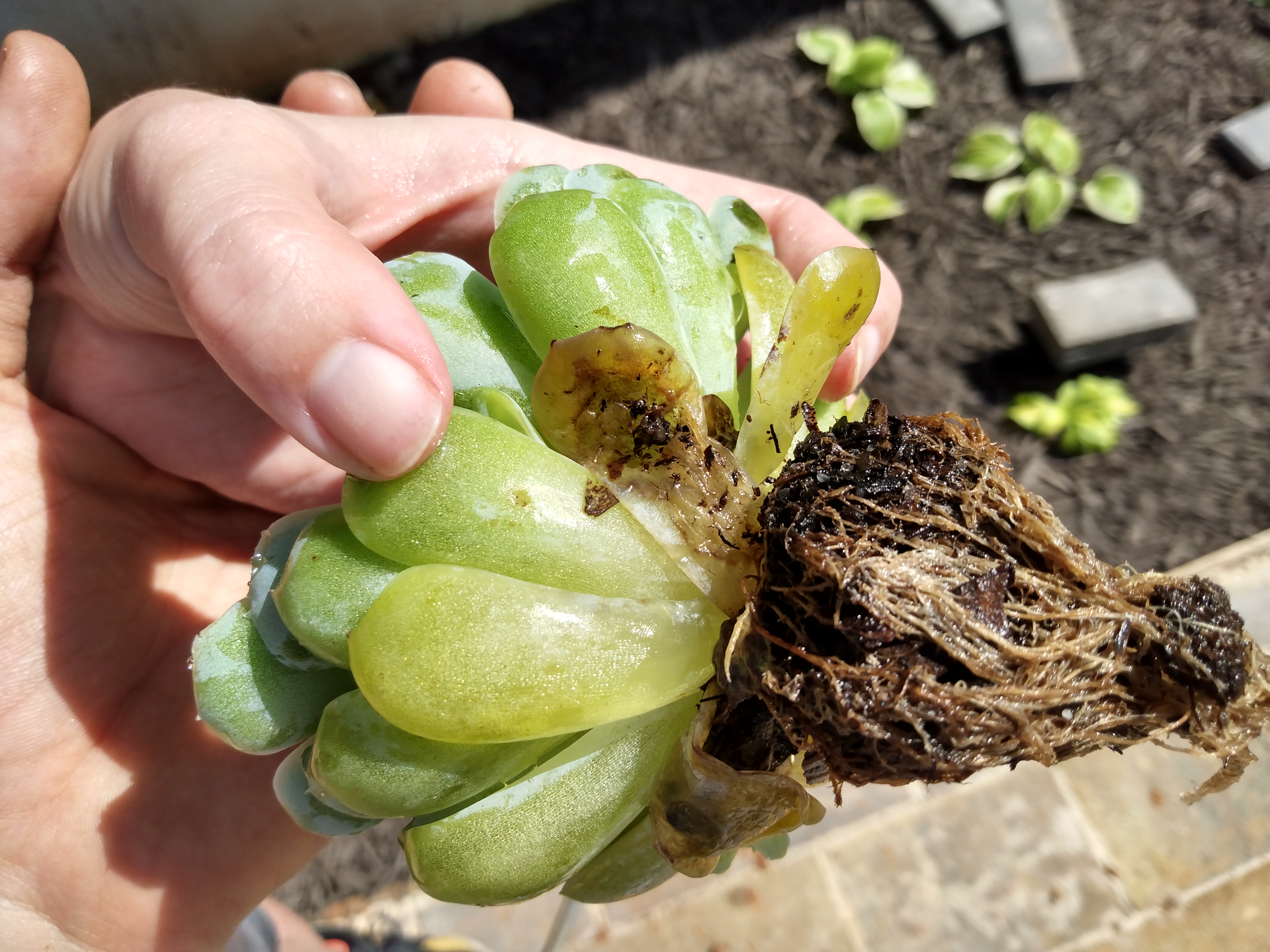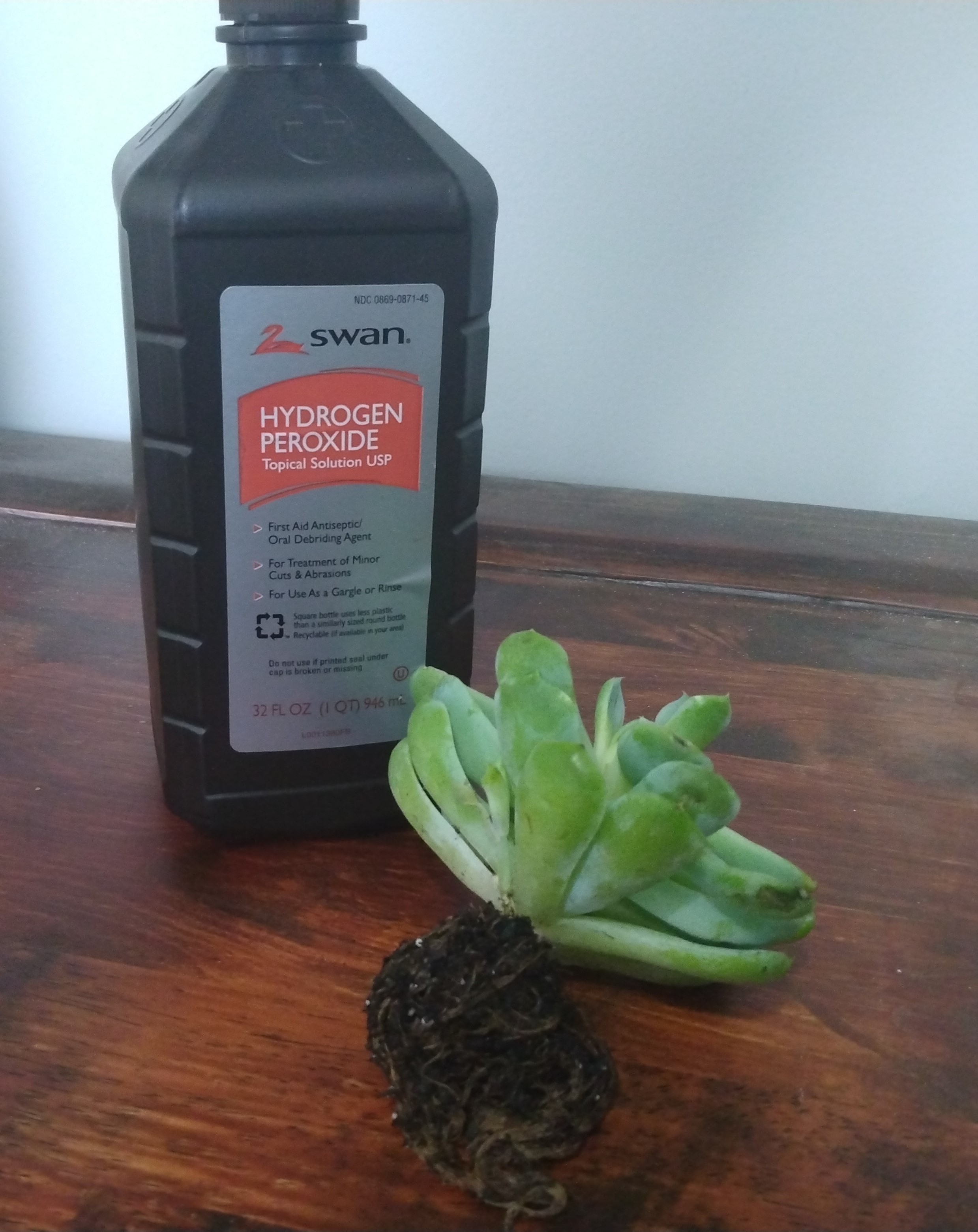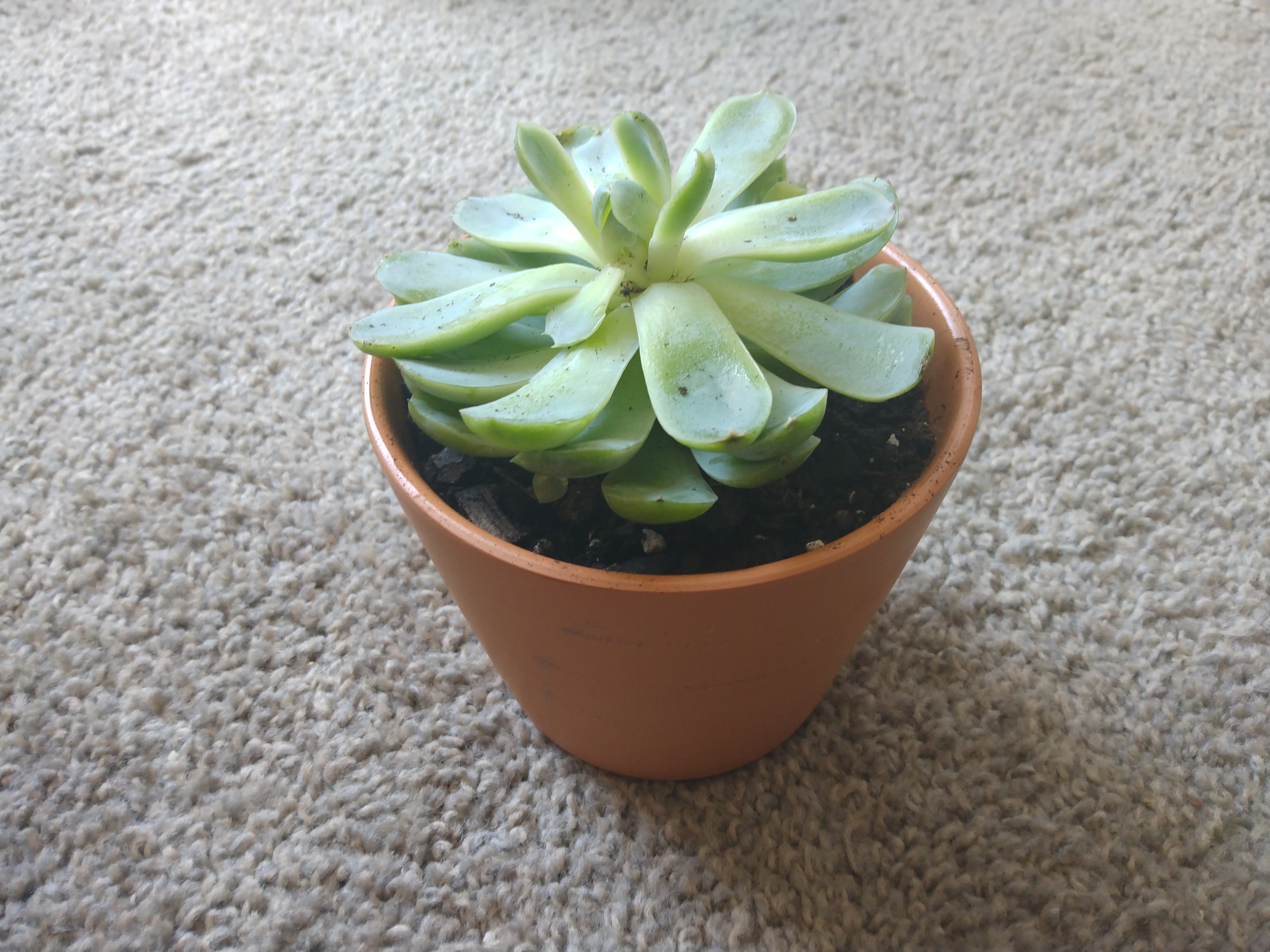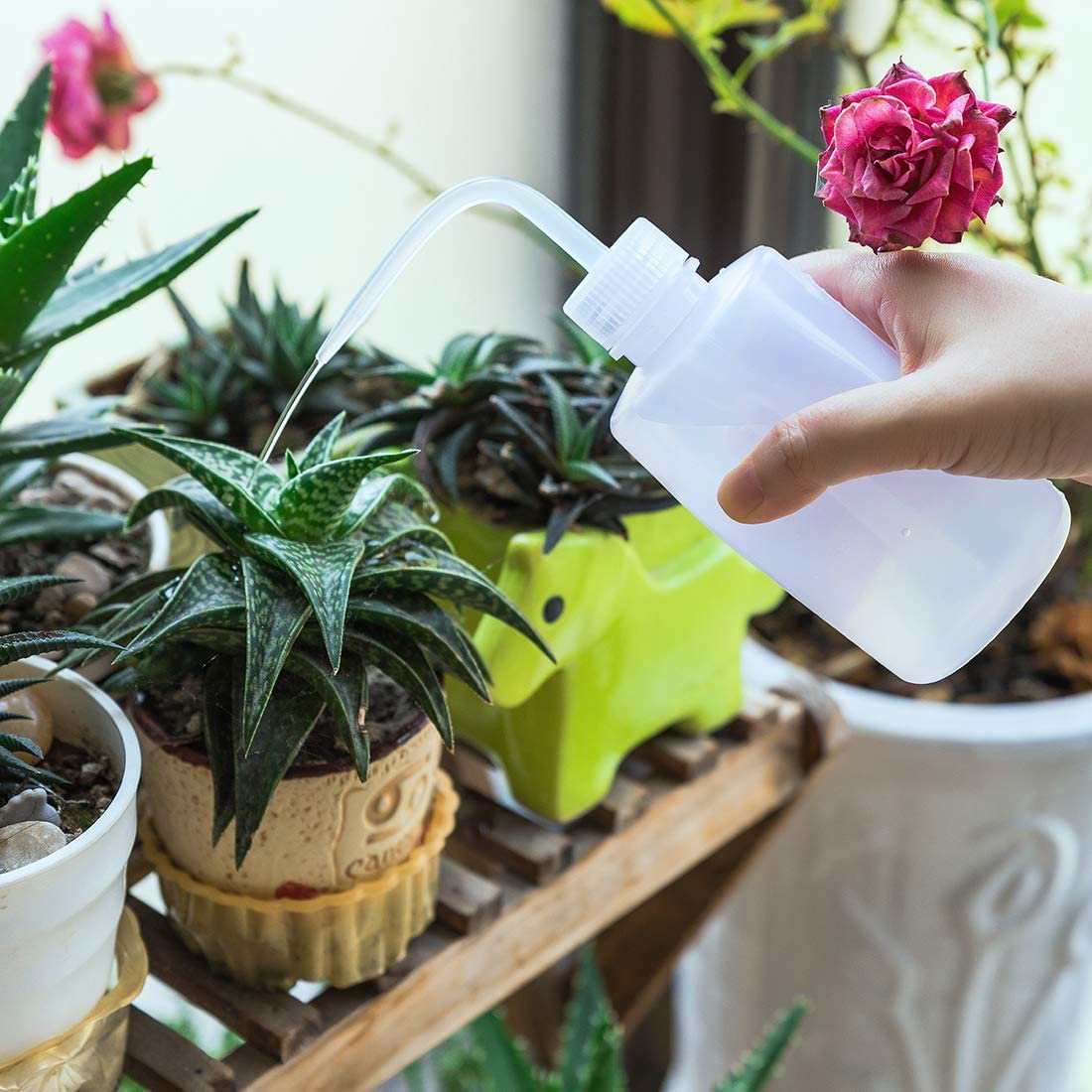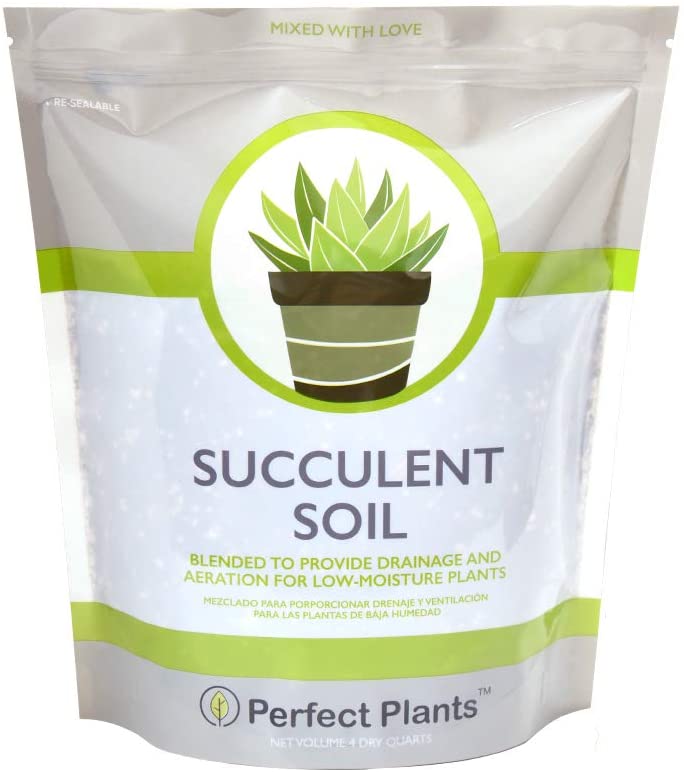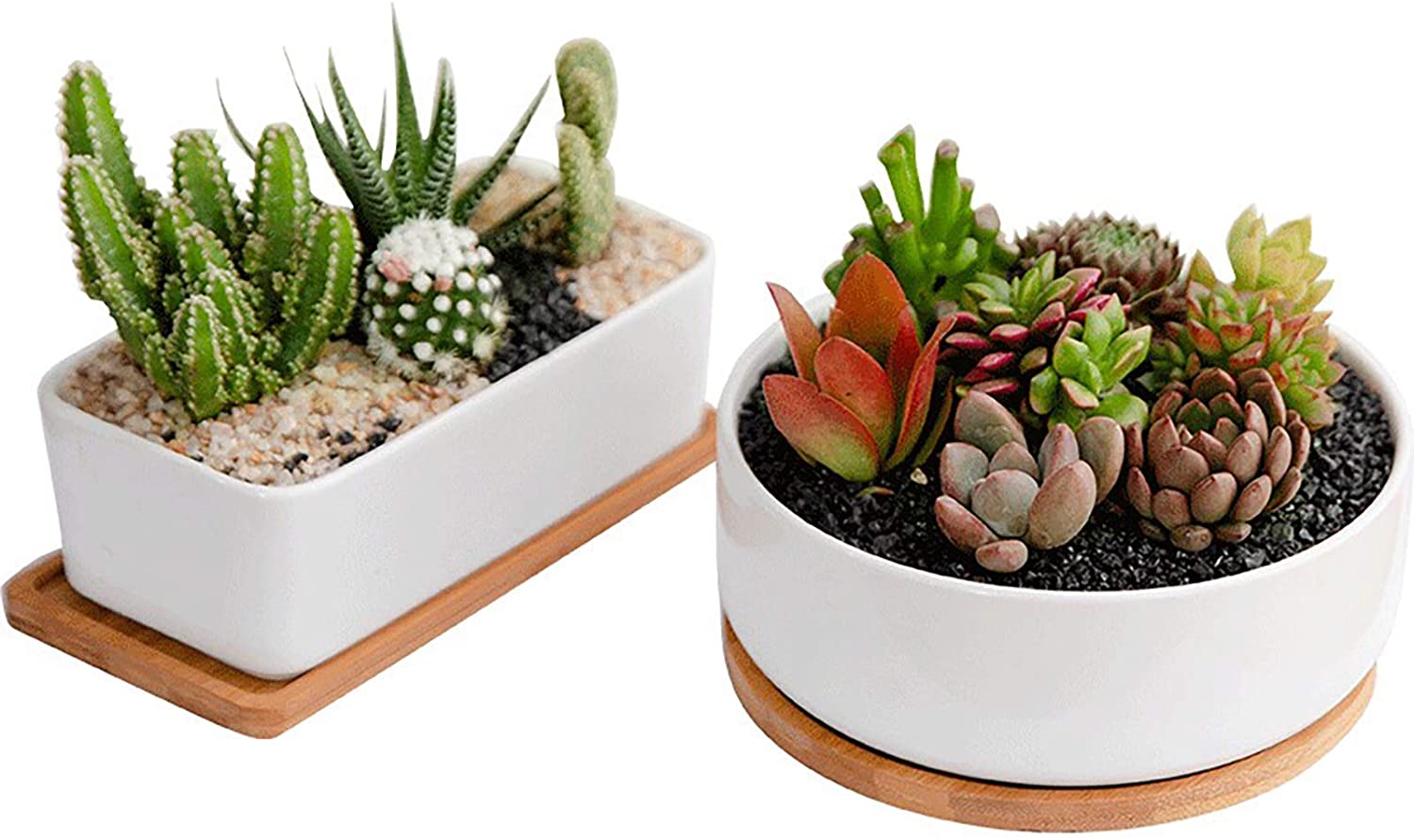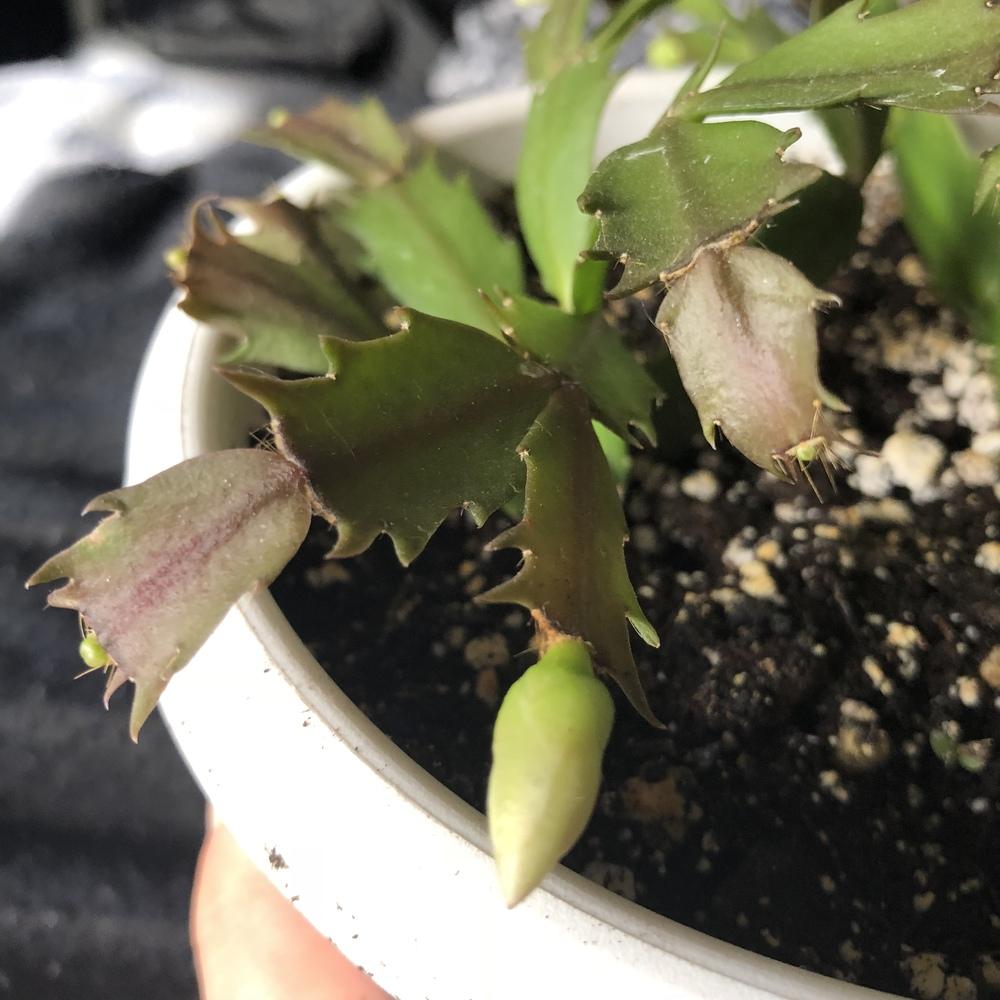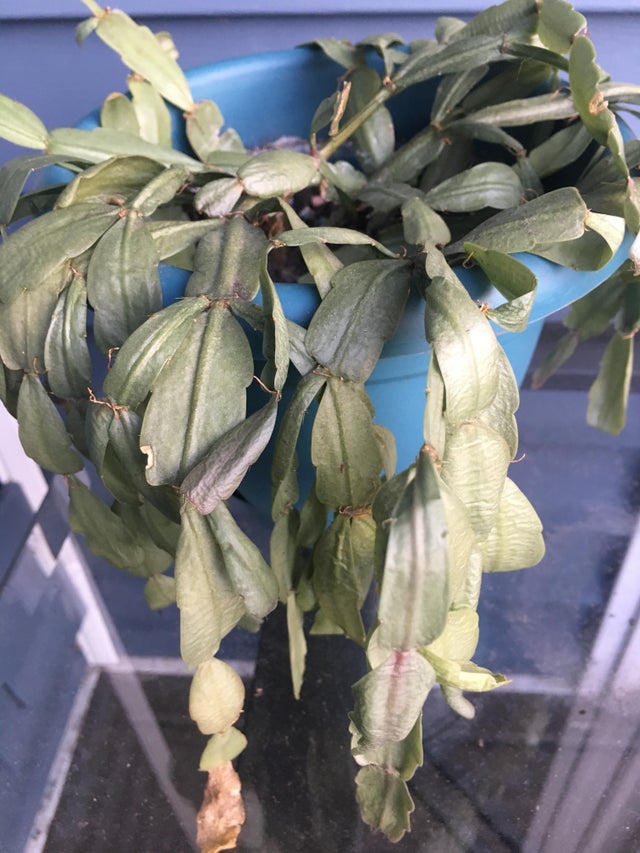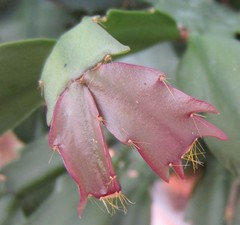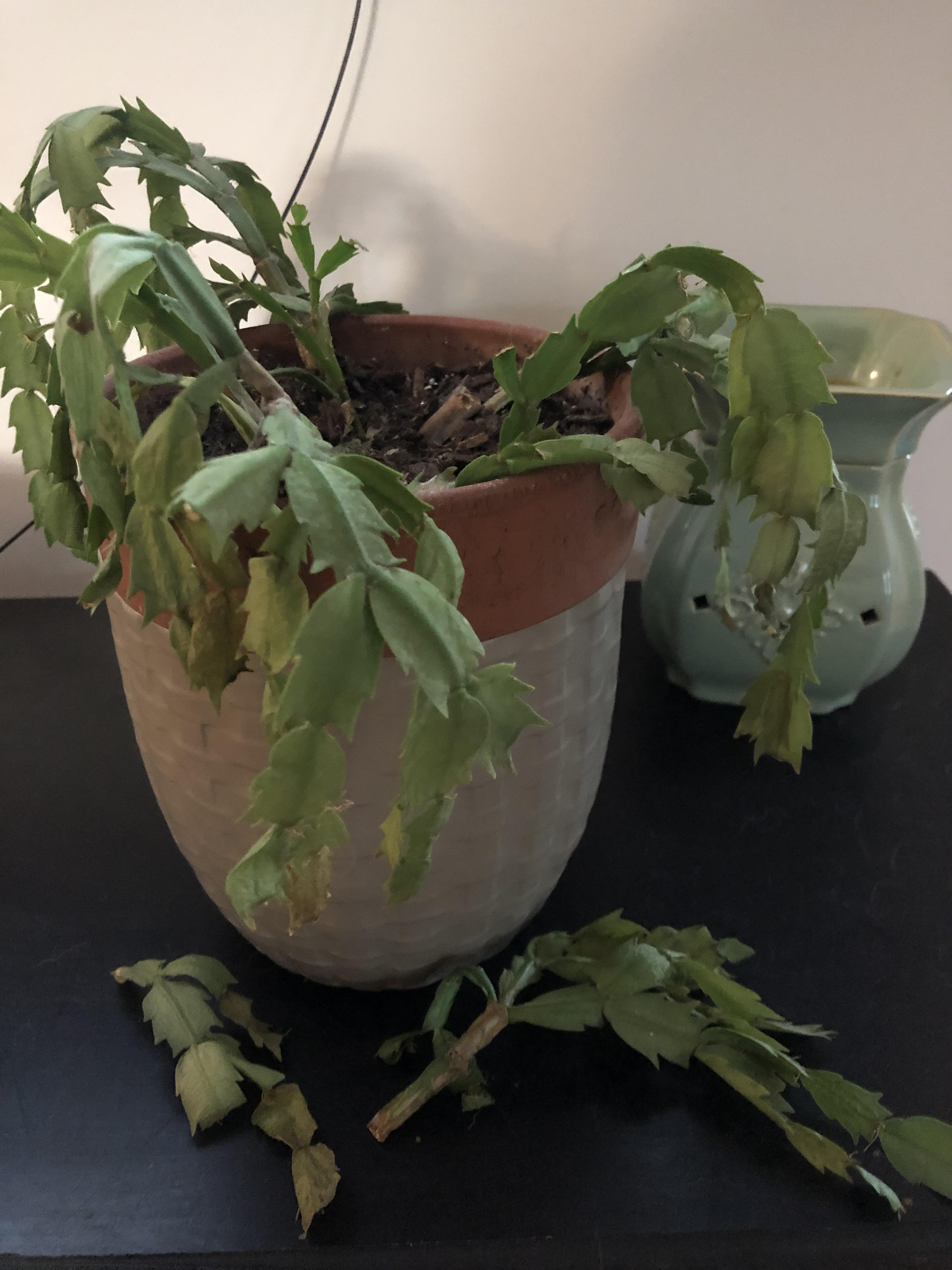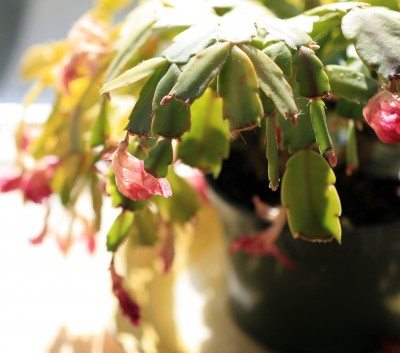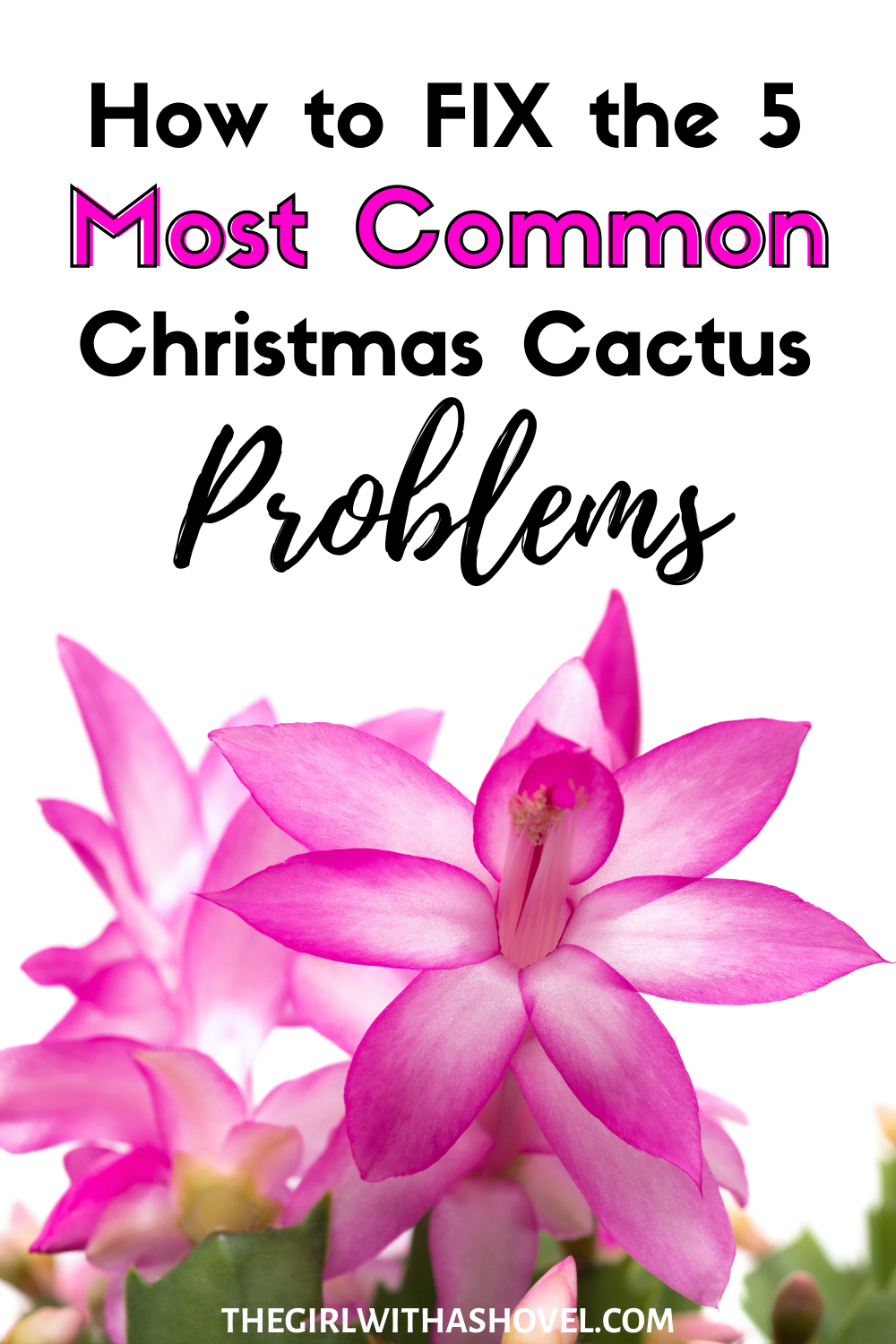Monstera deliciosa, also known as the Swiss Cheese plant, is one of the main tropical plants for every houseplant owner… these indoor plants have become a rite of passage for every serious plant person! This can be a good thing, though, as monstera plants can be relatively forgiving, as long as you know a few tricks. So here is everything you need to know to not only keep your monstera alive and healthy, but to also have it grow large, beautifully fenestrated leaves that you can’t wait to show off to your friends!
Monstera Care: Light Requirements
Monstera thrives in bright, indirect sunlight. Place your monstera near a window where it can get some natural light, but make sure to avoid direct sunlight, which can cause leaf scorch. This is seen as brown markings that start along the leaf edges. If you don’t have a bright spot in your home where you can put your Monstera, consider using grow lights to provide it with the light it needs. My personal monstera did quite well under grow lights, though if you want those large leaves, then nothing compares to lots of bright, natural light (which is once again NOT HOT, direct sunlight!)
One sign you might notice if your monstera isn’t getting enough light is that your plant’s leaves will be small, and will also start to be long and stretched out. If this is your plant, you would do well to place it in a location with more bright light, as well as consider pruning it back to help it form a sturdy base instead of a long, spindly one. (And make sure to propagate any cuttings at this time too!)
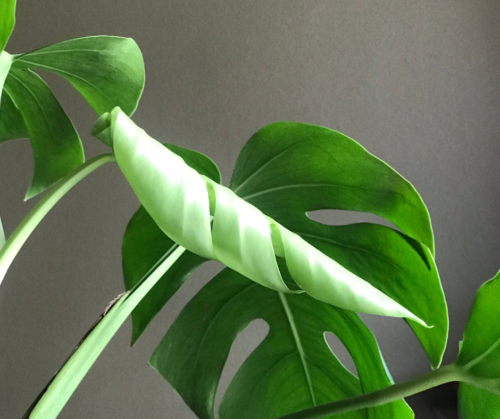
Monstera Care: Water Requirements
Monstera deliciosa plants are considered to need medium watering amounts. This means that they would like evenly moist soil, but make sure to let your plant dry out to the top inch of soil before watering again. If your plant receives too much water, it could get root rot, which would kill your entire plant fast! So make sure that you have a regular watering routine, but that you also use a light, well-draining soil and a pot with drainage holes. This will allow any excess water to drain out of the pot, which will help you avoid any overwatering issues!
During the growing season (usually spring through fall when it gets more light and warmer temperatures), your monstera will need a lot of water. But then, during the dormant season (usually during the winter months), you will need to decrease your watering. Because of this fluctuation in watering amounts it is a good idea for you to always be feeling the soil or use a soil moisture meter to determine if the soil is wet or dry BEFORE adding more water to your pot!
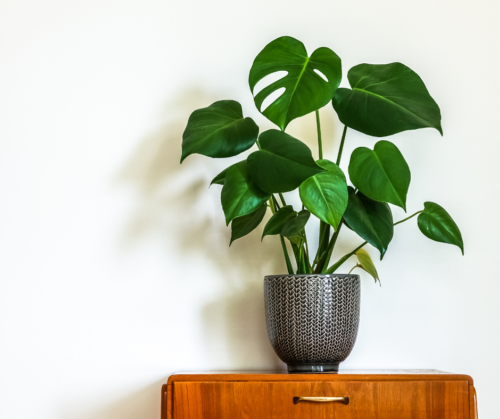
Monstera Care: Soil Tips
As mentioned above, this houseplant needs soil that drains well. This will help you avoid overwatering and root rot. For this, you should use a light potting mix… something that is specifically made for indoor plants, or a regular potting soil that is mixed with either sand or perlite. If this makes your pot too light, though, (especially if you use perlite), then you can place rocks in the bottom of your pot to keep it from falling over.
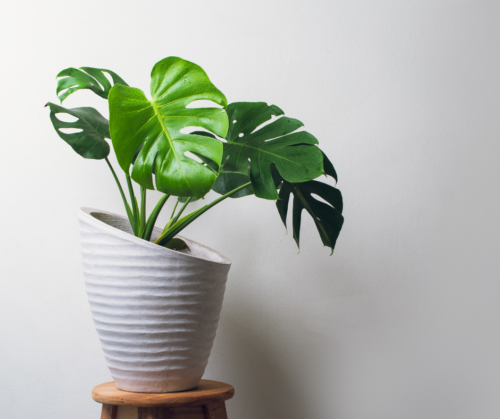
Monstera Care: Training it UP to Grow
One essential tip for monstera plants is that it NEEDS to be trained up a moss pole! Monstera plants are originally from the rainforests of central america. In its natural habitat, it uses aerial roots to wrap around tree trunks and climb its way to better light conditions high above in the canopy. Only then will it shoot out its large leaves!
This means that you will need to mimic this natural environment by giving it lots of bright indirect sunlight (to make it think it doesn’t need to climb any higher for light), and you will need to give it a moss pole to give it something to attach to. I’ve found that a sphagnum moss pole works the best, and if your plant still needs some help, you can give it some encouragement and wrap its aerial roots around your moss pole. Then secure the roots with plant ties or a bit of string.
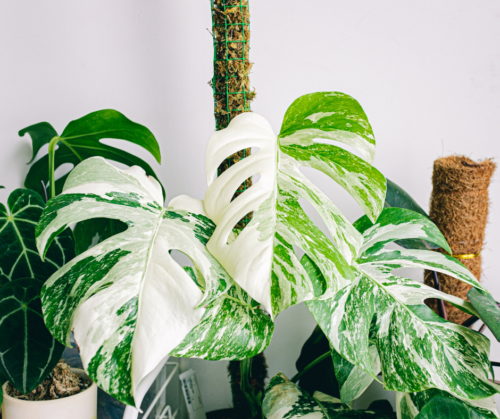
Monstera Care: Fertilizer is a MUST!!!
The next thing you need if you want a beautiful plant is you NEED to fertilize your little guy! Be careful not to over-fertilize, but definitely use your fertilizer to the maximum recommended dosage. This will vary based on the strength of your fertilizer, but this usually will have you fertilizing your monstera every 2 to 4 weeks.
The addition of fertilizer will boost your new growth to become larger with greater fenestrations (or holes) in the leaves. The one caution, however, is that you should only fertilize your monstera during periods of growth. This is usually from spring through fall. Fertilization during the winter can cause chemical burn to your plant.
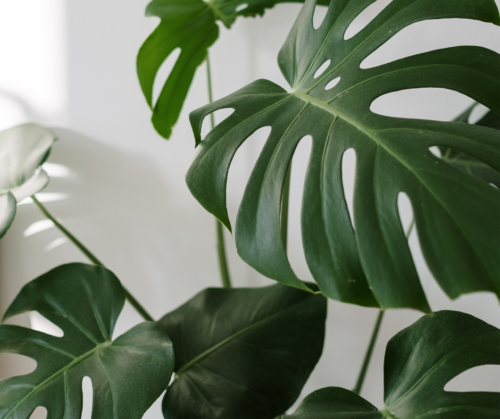
Monstera Care: How to Propagate…
The best way to propagate your monstera plant is through stem cuttings and rooting in water. I’ve found this is the easiest and fastest way to get new plants! First, you need to locate a leaf node. This is usually the junction where a leaf stem attaches to a main stem. It will also have a brown bump on the other side of this junction. This is where a root will form (or might have already started forming!).
Simply cut off a portion of your stem that includes this leaf node, then place the leaf cutting in water. Replace the water every week or so, and within a few weeks, you should have new roots growing!
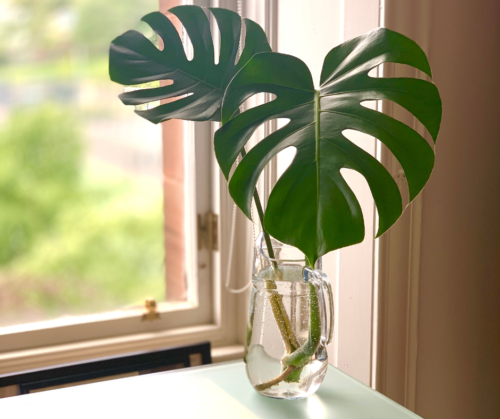
Once your roots are at least a couple of inches long, then you can transition your cuttings into soil. Pot your cutting into a well-draining soil mix, and make sure that it stays a little more moist for a couple of weeks while the roots are establishing in the soil.
Also, when you transition your cutting into soil, you will also need to provide support (since your roots won’t be able to hold the weight of your plant for a couple of weeks at least!). What I’ve done in the past is simply get a few straight sticks and bury them in the pot as well. Then I’ll tie my monstera stem onto the stick. Many different support systems will work, I’ve just found this to be the easiest and cheapest way to provide support.
*Quick Tip: You can also use this time to place a moss pole for your plant to climb! It might not have any aerial roots for a while, but if you’ve got it ready now then why wait, right?!
After a few weeks the root system should be established enough to hold the plant upright without the help of any support. Then, within a few months you should have a plethora of beautiful new leaves, signaling that you now don’t have a cutting… now you have your very own new plant!
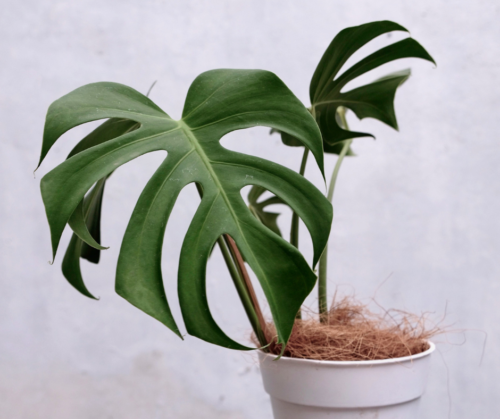
*Bonus Quick Tip: You can take monstera cuttings and place them in a decorative vase. Then you will have an attractive, living floral piece in your home! I’ve kept cuttings in a vase for a very long time (aka… MONTHS!) and they do GREAT!!! In fact, they looked so good, my neighbor asked if she could have some to put in her home! So definitely use this to your advantage…
This wraps up my Monstera deliciosa care tips! If you have any other questions, check out the Frequently Asked Questions section below. If this still doesn’t answer your question, then feel free to put up some pics on our Facebook group, Houseplants for Plant Killers! This is where I can personally help you along your plant journey!
Wanting more, check out my Youtube channel for more awesomesauce plant tips!
Happy Digging!
Frequently Asked Questions:
Is monstera easy to grow?
Monstera deliciosa is a relatively easy to care for houseplant. This plant does enjoy brighter lights, however, so if you only have low light, then I would recommend purchasing a different houseplant for your space. But if you do have an east, west, or south facing window, then go ahead an treat yourself to a beautiful monstera!
Where do Monstera plants grow best?
Monstera plants (as houseplants) grow best in any location that has bright indirect light and that is not affected by any cold breezes or heavy traffic. It also grows better with high humidity levels, so a bright bathroom would be the first best location. If this isn’t possible, don’t worry. As long as it gets plenty of bright, indirect light it will still do well in your home!
How do you grow healthy Monstera?
Healthy monsteras come from a combination of good lighting, proper watering, frequent fertilizer, and a moss pole (or similar) to allow it to climb. If your monstera has all of these things, then you should have a large, happy plant!
How often should I water Monstera?
Monstera plants should be kept moist, but need to be able to lightly dry in between watering. Watering amount and frequency will depend on your light situation, size of plant and pot, time of year, and type of soil and drainage. Overall, you should be watering about once every week, decreasing to no more than once every two weeks in the winter.
Should I put my monstera outside?
Placing your monstera outdoors can give it access to brighter light conditions, which could help it grow faster and larger! However, make sure that it stays in partial shade and NEVER in hot, direct sunlight. This could burn your monstera leaves. Also, make sure to bring your plant indoors if temperatures ever fall below 50 F or above 100 F to keep your plant safe.


